1ST TERM
1ST TERM
SCHEME OF WORK
WEEKS TOPICS
1. Introduction to Social Studies: (a) Meaning and Scope of Social Studies. (b) The Nature of Social Studies.
2. Introduction to Social Studies: (c) Objectives of Social Studies. (d) The importance of Social Studies.
3. Physical Environment: (a) Meaning of Environment. (b) Types of Environment. (c) Features of the Physical and Social Environment.
4. Physical Environment: (d) Resources in the Environment. (e) Influence of the Physical Environment on human activities. (f) Influence of human beings on Physical Environment.
5. Physical Environment: (a) Types of environmental problems. (b) Causes of environmental problems. (c) Effects of Environmental Problems on the society. (d) Solution to environmental problems.
6. Social environment: (a) Meaning and Types of Social Environment.
(b) Primary Social groups (Family) Types; Role and responsibilities of members.
7. Social environment: (c) Secondary Social Groups: Types, Structure, Roles and Responsibilities of members. (d) Influence of man on the environment.
8. Social environment: (e) Conflict within Social Group: Causes, effect and steps in conflict Resolution.
9. Revision.
10. Examination.
WEEKS TOPICS
1. Introduction to Social Studies: (a) Meaning and Scope of Social Studies. (b) The Nature of Social Studies.
2. Introduction to Social Studies: (c) Objectives of Social Studies. (d) The importance of Social Studies.
3. Physical Environment: (a) Meaning of Environment. (b) Types of Environment. (c) Features of the Physical and Social Environment.
4. Physical Environment: (d) Resources in the Environment. (e) Influence of the Physical Environment on human activities. (f) Influence of human beings on Physical Environment.
5. Physical Environment: (a) Types of environmental problems. (b) Causes of environmental problems. (c) Effects of Environmental Problems on the society. (d) Solution to environmental problems.
6. Social environment: (a) Meaning and Types of Social Environment.
(b) Primary Social groups (Family) Types; Role and responsibilities of members.
7. Social environment: (c) Secondary Social Groups: Types, Structure, Roles and Responsibilities of members. (d) Influence of man on the environment.
8. Social environment: (e) Conflict within Social Group: Causes, effect and steps in conflict Resolution.
9. Revision.
10. Examination.
WEEK 1
TOPIC: Introduction to Social Studies:
CONTENT:
- Meaning and scope of social studies.
- Nature of social studies
MEANING AND SCOPE OF SOCIAL STUDIES:
Social studies can be described as a subject that studies the way man lives in his physical and social environment. It is about how man influences his environment and how this environment in turn influences him. The things around man are generally referred to as man’s physical environment, e.g. Land, river, water, etc. His social environment includes the other people he lives with, their culture, types of education he receives, etc.
How man influences his environment and how his environment influences him: Man influences his environment in a lot of ways, e.g. He cultivates the land for his food and earns a living, he depends on the sea and the rivers for fishing, and he taps natural resources both for his personal use and earns a living.
The physical environment influences the types of crops he plants, the type of food he eats, the type of clothes he wears etc. Social environment also influences his cultural practices, his religion, marriage, etc.

SCOPE OF SOCIAL STUDIES
Social studies are the combination of many subjects such as history, geography, sociology, economics and government. The issues that it examines include:
(i) How to solve problems such as corruption, bad leadership, drug abuse and crimes.
(ii) How to vote during election.
(iii) How they can produce enough food for everyone to eat.
(iv) How people can work together without conflict.
(v) Why laws should be obeyed.
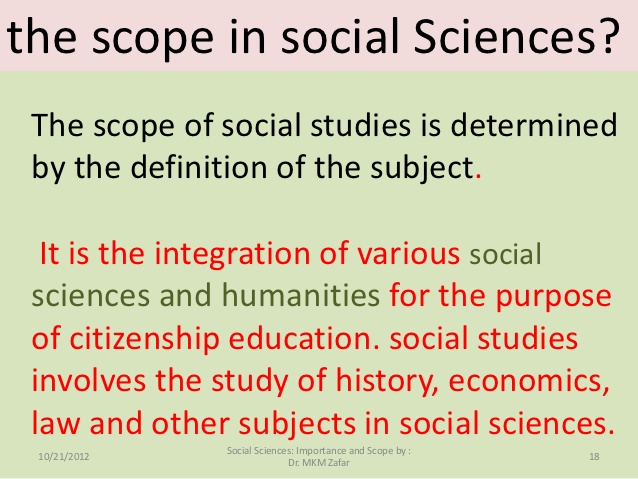
EVALUATION
(i) What is Social studies?
(ii) List three issues that Social studies deals with.
SUB-TOPIC: NATURE OF SOCIAL STUDIES
CONTENT:
Social studies is concerned with the society we live in, our roles and the benefits we get as members of the society. It makes us know more about our environment and places beyond our immediate environment. Through Social studies, we are made to understand the changes that take place in our environment and how we can adapt to them.
Social studies helps us to realize that we are all human beings even though we have differences.

REASONS FOR STUDYING SOCIAL STUDIES.
The following are the reasons for studying Social Studies:
1. To understand our environment.
2. It teaches the importance of knowledge, skills and attitudes and values which we learn through living in a community.
3. It also helps man to solve problems relating to his environment.
4. It helps to understand our day to day activities in our society.
5. It enables us to know more about our culture.
6. It also helps to learn about aspect of sexuality and sexual health.

EVALUATION
READING ASSIGNMENT: - Read chapter 1 of Social studies for Junior Secondary School by Remi Aiyede, pages 3-5
OBJECTIVE QUESTIONS
1. Social studies can be defined as _________
a. Study of man b. Study of environment c. The way man lives in his physical and social environment
2. The two environment of man are _______
a. Trees and land b. Physical and social c. Social and surroundings
3. One of the subjects below is not related to social studies.
a. History b. Geography c. Biology
4. The things around man are generally referred to as his ___________
a. Social environment b. Physical environment c. Home
5. The people and social practices around man are referred to as _______
a. Social status b. Physical environment c. Social environment
THEORY
1. Identify two ways by which man influences his environment.
2. Give three features of physical environment.
3. List four reasons for studying Social Studies.
LESSON 2
MAIN TOPIC: MEANING OF SOCIAL STUDIES.
SPECIFIC TOPIC: SCOPE OF SOCIAL STUDIES.
REFERENCE BOOKS:
Social Studies for Nigerian JSS Book 1, by Remi E. Aiyede Et al.
Basic Social Studies For Nigeria Secondary Schools by Anikpo et al.
Simplified Social Studies for JSS by Ogunwale A.
PERFORMANCE OBJECTIVES: At the end of the lesson, the students should be able to:
1. discuss the scope of Social Studies.
2. list the objectives of Social Studies.
CONTENTS:
THE SCOPE OF SOCIAL STUDIES.
Social Studies is a wide subject and it examines the following:
1. How people can live in peace under a government.
2. How people can work together to make life comfortable and pleasant.
3. How they can produce enough food for everyone to eat.
4. How production should be organized.
5. Why taxes are paid.
6. How to vote and why.
7. How law should be obeyed.
8. Why people's right should be respected.
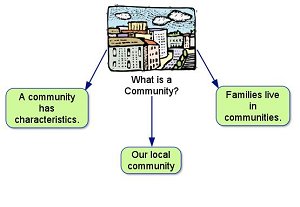
OBJECTIVES OF SOCIAL STUDIES.
1. Disciplinary knowledge- It informs the students about people in general, their society and the environment.
2. Inquiry, interpersonal and critical thinking skills- It makes people to think well and better and able to relate well with others.
3. Respect for democratic societal values- Students are taught their rights and obligations to the society, and the need to respect the rights of the others.
4. Interest in public affairs- It encourages students to be aware of what is happening in their country and to actively participate in its affairs.
EVALUATION
1. what are scope of Social Studies.
2. List five objectives of Social Studies.
further studies
http://www.scribd.com/doc/32462608/Orig ... of-Nigeria
CONTENT:
- Meaning and scope of social studies.
- Nature of social studies
MEANING AND SCOPE OF SOCIAL STUDIES:
Social studies can be described as a subject that studies the way man lives in his physical and social environment. It is about how man influences his environment and how this environment in turn influences him. The things around man are generally referred to as man’s physical environment, e.g. Land, river, water, etc. His social environment includes the other people he lives with, their culture, types of education he receives, etc.
How man influences his environment and how his environment influences him: Man influences his environment in a lot of ways, e.g. He cultivates the land for his food and earns a living, he depends on the sea and the rivers for fishing, and he taps natural resources both for his personal use and earns a living.
The physical environment influences the types of crops he plants, the type of food he eats, the type of clothes he wears etc. Social environment also influences his cultural practices, his religion, marriage, etc.

SCOPE OF SOCIAL STUDIES
Social studies are the combination of many subjects such as history, geography, sociology, economics and government. The issues that it examines include:
(i) How to solve problems such as corruption, bad leadership, drug abuse and crimes.
(ii) How to vote during election.
(iii) How they can produce enough food for everyone to eat.
(iv) How people can work together without conflict.
(v) Why laws should be obeyed.

EVALUATION
(i) What is Social studies?
(ii) List three issues that Social studies deals with.
SUB-TOPIC: NATURE OF SOCIAL STUDIES
CONTENT:
Social studies is concerned with the society we live in, our roles and the benefits we get as members of the society. It makes us know more about our environment and places beyond our immediate environment. Through Social studies, we are made to understand the changes that take place in our environment and how we can adapt to them.
Social studies helps us to realize that we are all human beings even though we have differences.

REASONS FOR STUDYING SOCIAL STUDIES.
The following are the reasons for studying Social Studies:
1. To understand our environment.
2. It teaches the importance of knowledge, skills and attitudes and values which we learn through living in a community.
3. It also helps man to solve problems relating to his environment.
4. It helps to understand our day to day activities in our society.
5. It enables us to know more about our culture.
6. It also helps to learn about aspect of sexuality and sexual health.

EVALUATION
READING ASSIGNMENT: - Read chapter 1 of Social studies for Junior Secondary School by Remi Aiyede, pages 3-5
OBJECTIVE QUESTIONS
1. Social studies can be defined as _________
a. Study of man b. Study of environment c. The way man lives in his physical and social environment
2. The two environment of man are _______
a. Trees and land b. Physical and social c. Social and surroundings
3. One of the subjects below is not related to social studies.
a. History b. Geography c. Biology
4. The things around man are generally referred to as his ___________
a. Social environment b. Physical environment c. Home
5. The people and social practices around man are referred to as _______
a. Social status b. Physical environment c. Social environment
THEORY
1. Identify two ways by which man influences his environment.
2. Give three features of physical environment.
3. List four reasons for studying Social Studies.
LESSON 2
MAIN TOPIC: MEANING OF SOCIAL STUDIES.
SPECIFIC TOPIC: SCOPE OF SOCIAL STUDIES.
REFERENCE BOOKS:
Social Studies for Nigerian JSS Book 1, by Remi E. Aiyede Et al.
Basic Social Studies For Nigeria Secondary Schools by Anikpo et al.
Simplified Social Studies for JSS by Ogunwale A.
PERFORMANCE OBJECTIVES: At the end of the lesson, the students should be able to:
1. discuss the scope of Social Studies.
2. list the objectives of Social Studies.
CONTENTS:
THE SCOPE OF SOCIAL STUDIES.
Social Studies is a wide subject and it examines the following:
1. How people can live in peace under a government.
2. How people can work together to make life comfortable and pleasant.
3. How they can produce enough food for everyone to eat.
4. How production should be organized.
5. Why taxes are paid.
6. How to vote and why.
7. How law should be obeyed.
8. Why people's right should be respected.

OBJECTIVES OF SOCIAL STUDIES.
1. Disciplinary knowledge- It informs the students about people in general, their society and the environment.
2. Inquiry, interpersonal and critical thinking skills- It makes people to think well and better and able to relate well with others.
3. Respect for democratic societal values- Students are taught their rights and obligations to the society, and the need to respect the rights of the others.
4. Interest in public affairs- It encourages students to be aware of what is happening in their country and to actively participate in its affairs.
EVALUATION
1. what are scope of Social Studies.
2. List five objectives of Social Studies.
further studies
http://www.scribd.com/doc/32462608/Orig ... of-Nigeria
WEEK 2
WEEK 2
TOPIC: Introduction to Social Studies
CONTENT: Objectives of social studies
Importance of social studies
OBJECTIVES OF SOCIAL STUDIES
The general objectives of social studies is to prepare students for a useful life as good citizens and how to train the citizens to improve their communities.
Other objectives are:
To promote understanding among students both nationally and globally.
To be able to think in a critical and logical way.
To help us understand the importance of hard work and honesty in the society.
To understand the laws of our country and be able to obey them.
To understand our environment, its problems and be able to solve them.
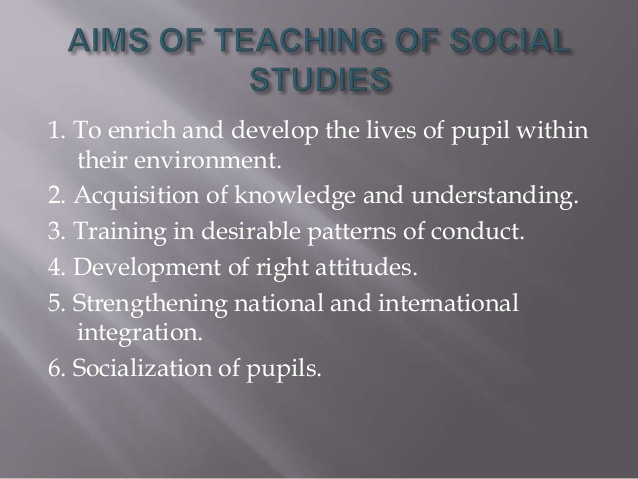
EVALUATION
State TWO reasons why we study social studies.
Mention ONE general objective of social studies.
IMPORTANCE OF SOCIAL STUDIES
The following are the importance of social studies
1. It equips the citizens of a nation to be active and reproductive in the development of the nation.
2. It teaches us how to interact and live peacefully with other members of the society
3. It helps us to know how man influences his environment and how his environment influences him.
4. It develops our sense of responsibility.
5. It trains us to become good citizens.

EVALUATION:
1. Mention three objectives of social studies
2. Give two importance of social studies
READING ASSIGNMENT
Read Lantern Comprehensive Social Studies by K. A. Salami. Chapter 1 pages 3-
ASSIGNMENT
Objective Test:
1. Social Studies trains us to become _______
a. Good citizens b. Selfish citizens c. Citizens of Nigeria
2. Social studies helps to develop sense of _______
a. Eating b. Dancing c. Responsibility
3. By nature, man uses his knowledge of social studies to solve his problems.
a. True b. False
THEORY
1. State TWO objectives of social studies
2. Mention TWO reasons why social studies is important for our study at the secondary school.
TOPIC: Introduction to Social Studies
CONTENT: Objectives of social studies
Importance of social studies
OBJECTIVES OF SOCIAL STUDIES
The general objectives of social studies is to prepare students for a useful life as good citizens and how to train the citizens to improve their communities.
Other objectives are:
To promote understanding among students both nationally and globally.
To be able to think in a critical and logical way.
To help us understand the importance of hard work and honesty in the society.
To understand the laws of our country and be able to obey them.
To understand our environment, its problems and be able to solve them.

EVALUATION
State TWO reasons why we study social studies.
Mention ONE general objective of social studies.
IMPORTANCE OF SOCIAL STUDIES
The following are the importance of social studies
1. It equips the citizens of a nation to be active and reproductive in the development of the nation.
2. It teaches us how to interact and live peacefully with other members of the society
3. It helps us to know how man influences his environment and how his environment influences him.
4. It develops our sense of responsibility.
5. It trains us to become good citizens.

EVALUATION:
1. Mention three objectives of social studies
2. Give two importance of social studies
READING ASSIGNMENT
Read Lantern Comprehensive Social Studies by K. A. Salami. Chapter 1 pages 3-
ASSIGNMENT
Objective Test:
1. Social Studies trains us to become _______
a. Good citizens b. Selfish citizens c. Citizens of Nigeria
2. Social studies helps to develop sense of _______
a. Eating b. Dancing c. Responsibility
3. By nature, man uses his knowledge of social studies to solve his problems.
a. True b. False
THEORY
1. State TWO objectives of social studies
2. Mention TWO reasons why social studies is important for our study at the secondary school.
WEEK 3
TOPIC: Physical Environment
CONTENT: Meaning of Environment
Types and features of physical environment
ENVIRONMENT
The word environment means everything that surrounds us or our community which affects our survival or progress.
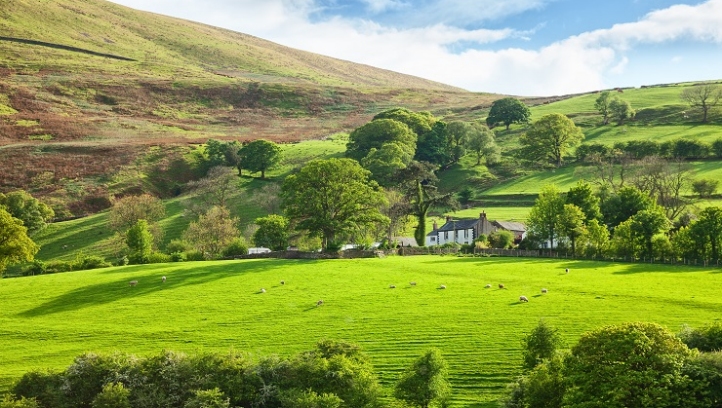
Types of Environment
There are two major types of environment, namely
Physical environment and
Social environment

Meaning of physical environment: Physical environment is defined as man’s immediate environment. It is all those things we see in our surrounding that are made by God or man.
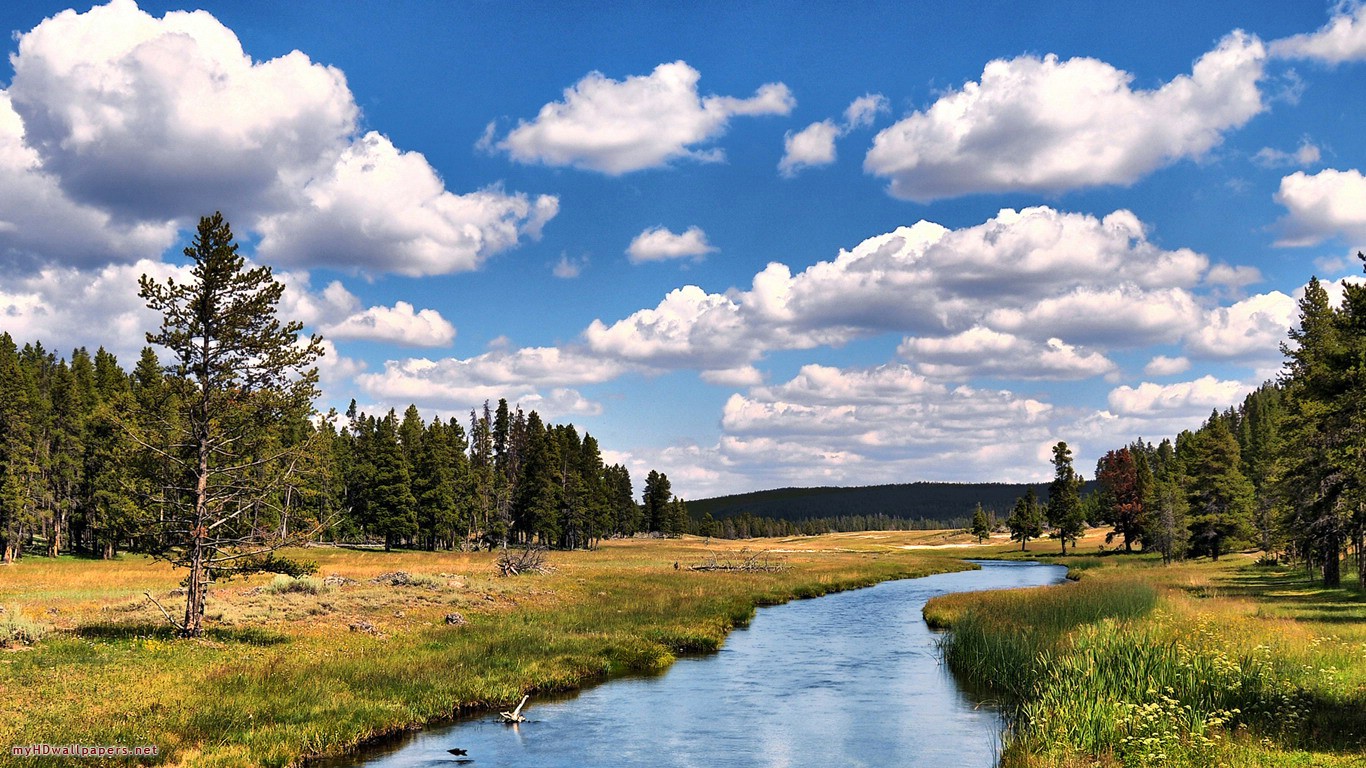
EVALUATION
1 Identify the TWO environment of man.
2 What is physical environment?
We have two physical environment. These are:
(i) The natural environment
(ii) The man-made environment
FEATURES OF THE PHYSICAL ENVIRONMENT:
(1)The natural environment: - These are things provided by God or nature.
These include:
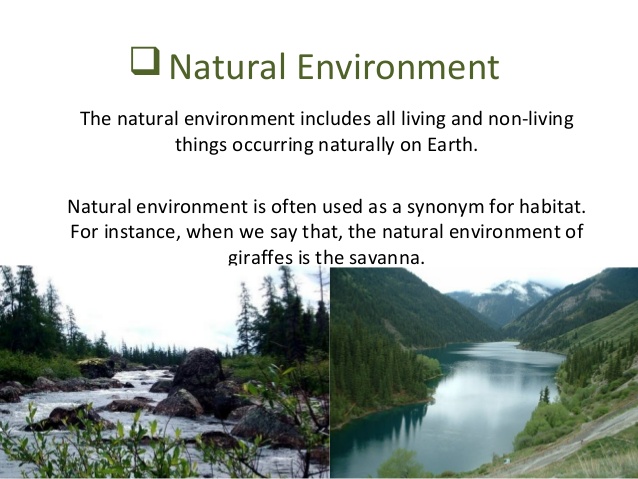
Water bodies e.g. lakes, rivers, oceans, seas, streams etc.
Relief - plain, low land, valley, highland, mountains etc.
Climate - temperature, sunshine, wind, rainfall, humidity, etc.
Vegetation – forests, grasslands, deserts, etc.
(2) The man-made environment: these are things in our environment that are made by man. These include roads, houses, factories, hospitals, etc.
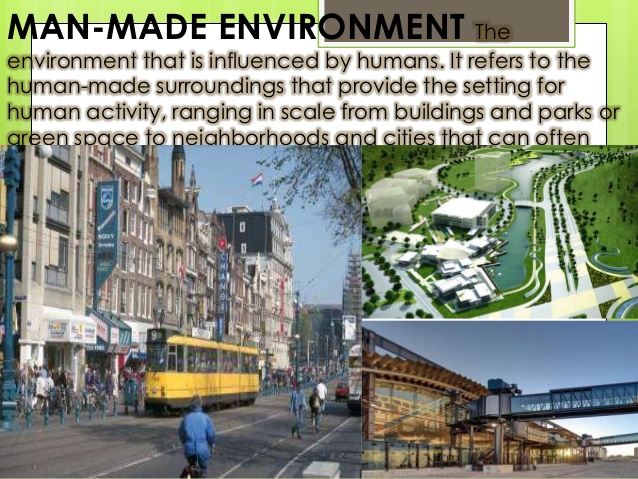
EVALUATION:
1. What is natural environment?
2. Mention three features of water bodies
READING ASSIGNMENT
Read social studies for Nigerian Junior secondary schools by Remi Aiyede. Chapter 3 pages 17-20
ASSIGNMENT
Objective Test:
1. The word environment means _______
a. Your home b. your school c. Everything that surround environment you
2. There are _______ and _______ environment.
a. School and classroom b. home and street c. physical and social.
3. Climatic features include _______
a. Forest and temperature b. houses and sunshine c. rainfall and humidity
MAIN TOPIC: SOCIAL ORGANIZATION.
SPECIFIC TOPIC: SOCIAL ORGANIZATION.
REFERENCE BOOKS: Social Studies for Nigerian JSS Book 1, by Remi E. Aiyede Et al. Basic Social Studies for Nigeria Secondary Schools by Anikpo et al. Simplified Social Studies forJSS by Ogunwale A.
PERFORMANCE OBJECTIVES: At the end of the lesson, the students should be able to:
1. define social organization.
2. mention types of social organization.
CONTENTS:
SOCIAL ORGANIZATION.
This refers to the ways a society is formed and kept together. These are societal organizations for boys, girls and adults.
These organizations have certain functions and duties they perform. Such organizations include Boys Scout, Girls Guide e.t.c.

CONTENT: Meaning of Environment
Types and features of physical environment
ENVIRONMENT
The word environment means everything that surrounds us or our community which affects our survival or progress.

Types of Environment
There are two major types of environment, namely
Physical environment and
Social environment

Meaning of physical environment: Physical environment is defined as man’s immediate environment. It is all those things we see in our surrounding that are made by God or man.

EVALUATION
1 Identify the TWO environment of man.
2 What is physical environment?
We have two physical environment. These are:
(i) The natural environment
(ii) The man-made environment
FEATURES OF THE PHYSICAL ENVIRONMENT:
(1)The natural environment: - These are things provided by God or nature.
These include:

Water bodies e.g. lakes, rivers, oceans, seas, streams etc.
Relief - plain, low land, valley, highland, mountains etc.
Climate - temperature, sunshine, wind, rainfall, humidity, etc.
Vegetation – forests, grasslands, deserts, etc.
(2) The man-made environment: these are things in our environment that are made by man. These include roads, houses, factories, hospitals, etc.

EVALUATION:
1. What is natural environment?
2. Mention three features of water bodies
READING ASSIGNMENT
Read social studies for Nigerian Junior secondary schools by Remi Aiyede. Chapter 3 pages 17-20
ASSIGNMENT
Objective Test:
1. The word environment means _______
a. Your home b. your school c. Everything that surround environment you
2. There are _______ and _______ environment.
a. School and classroom b. home and street c. physical and social.
3. Climatic features include _______
a. Forest and temperature b. houses and sunshine c. rainfall and humidity
MAIN TOPIC: SOCIAL ORGANIZATION.
SPECIFIC TOPIC: SOCIAL ORGANIZATION.
REFERENCE BOOKS: Social Studies for Nigerian JSS Book 1, by Remi E. Aiyede Et al. Basic Social Studies for Nigeria Secondary Schools by Anikpo et al. Simplified Social Studies forJSS by Ogunwale A.
PERFORMANCE OBJECTIVES: At the end of the lesson, the students should be able to:
1. define social organization.
2. mention types of social organization.
CONTENTS:
SOCIAL ORGANIZATION.
This refers to the ways a society is formed and kept together. These are societal organizations for boys, girls and adults.
These organizations have certain functions and duties they perform. Such organizations include Boys Scout, Girls Guide e.t.c.

WEEK 4
TOPIC: Physical Environment:
CONTENT:
-Resources in the environment
-Their uses
Resources In Our Environment
Natural resources are those things provided by nature which help to satisfy our needs. These resources occur as liquids, rocks, plants and animals. They may be agricultural or mineral resources. The availability of these resources are very important.
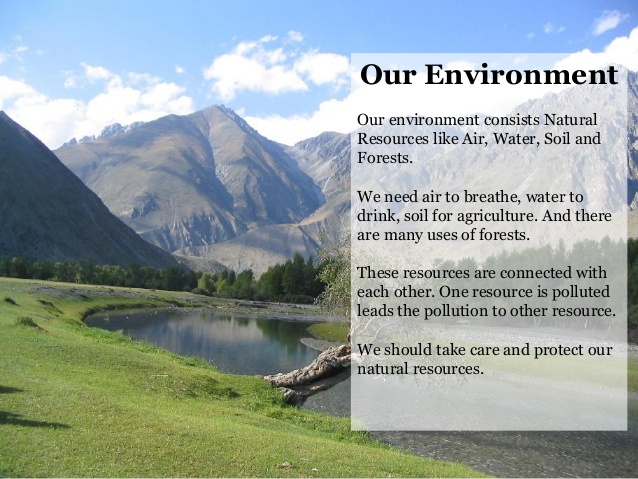
Resources in our physical environment can be classified into two. These are:
Renewable resources
Non renewable resources
a. Renewable resources: Renewable resources can be replaced as they are used. Examples are soil, forest and marine resources.
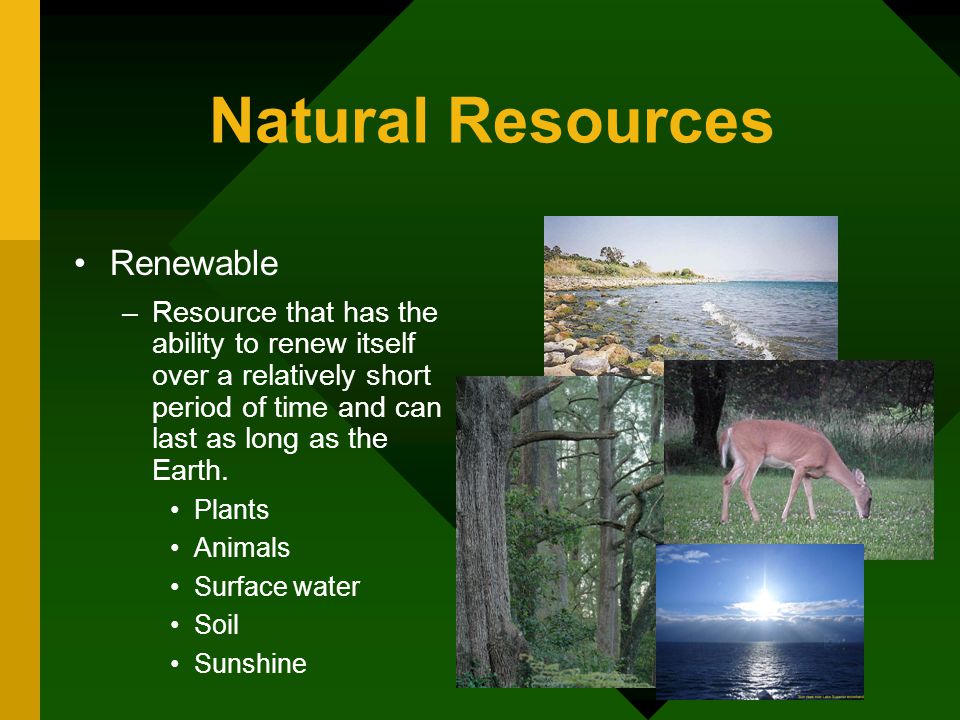
b. Non- Renewable resources: These are the resources that cannot be renewed when exhausted or used. They include virtually all the solid minerals such as gold, tin, coal, iron ore, columbite etc.

EVALUATION
1. What are natural resources?
2. Identify the TWO types of resources and give TWO examples of each.
USES OF RESOURCES
a. RENEWABLE RESOURCES AND THEIR USES
The vast tropical rain forest is exploited for various uses. The major product exploited in the rainforest is timber which is used for making various household furniture, building boats, etc.
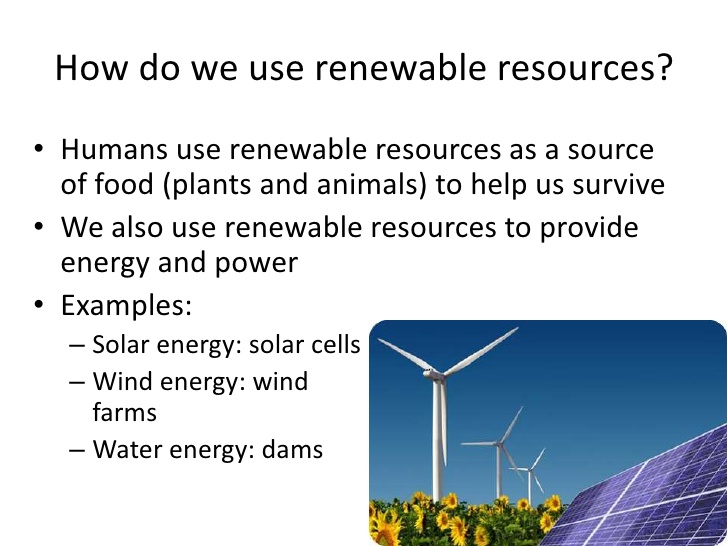

Marine or water resources – Water aids transportation, it is used in generating electricity, used for sporting activities, and serves as the source of some food nutrients.
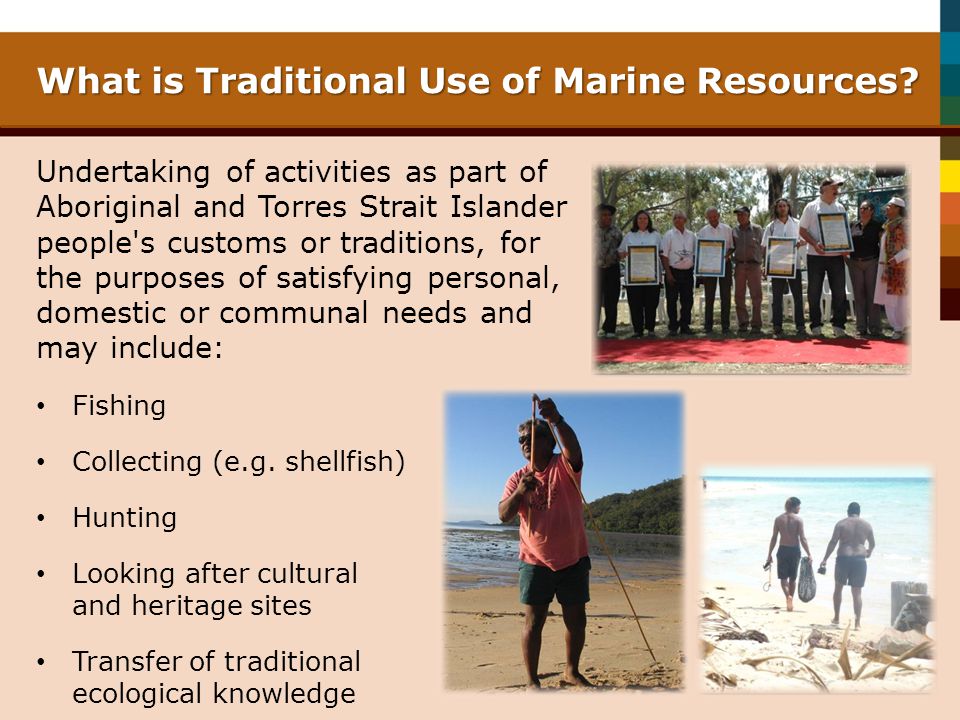
b. NON RENEWABLE RESOURCES e.g. mineral resources.
Gold – for making jewelries, medals, wrist watches and ornament.
Limestone – for manufacturing cement.
Coal – used as fuel for cooking, for generating electricity, production of heat in steam engines, etc.
Tin ore – for manufacturing containers for packaging food and other materials.
Petroleum – source of fuels for vehicles and engines, bitumen for road construction, chemicals for making plastics, clothing materials, etc.
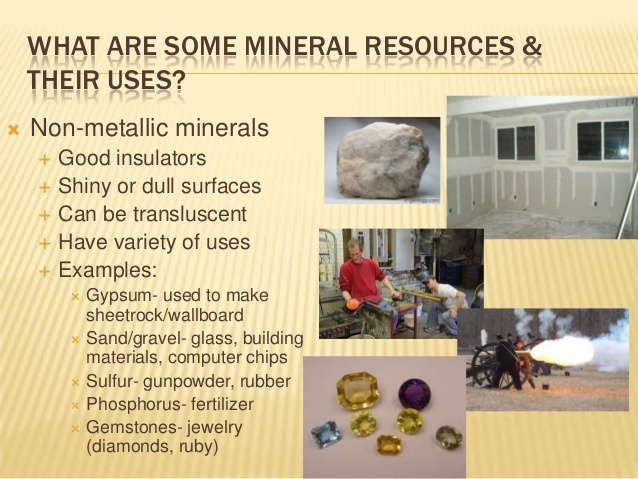
Subtopic: INFLUENCE OF THE PHYSICAL ENVIRONMENT ON HUMAN ACTIVITIES
1. Local Economy: The physical environment affects the local economy of each community. For instance, cattle rearing is practice in the grassland northern Nigeria by the Fulanis while the ljaws in the riverine areas practice fishing.

2. Religion: The Physical environment also affects the religion of the people. The people who live forest region worship trees like lroko and the god of iron as they use iron implements such as cutlass and hoe.

3. Transport: The transport system of a place is dictated by its physical environment. Canoes, boats or ships are used only where there are rivers, ocean lagoons.
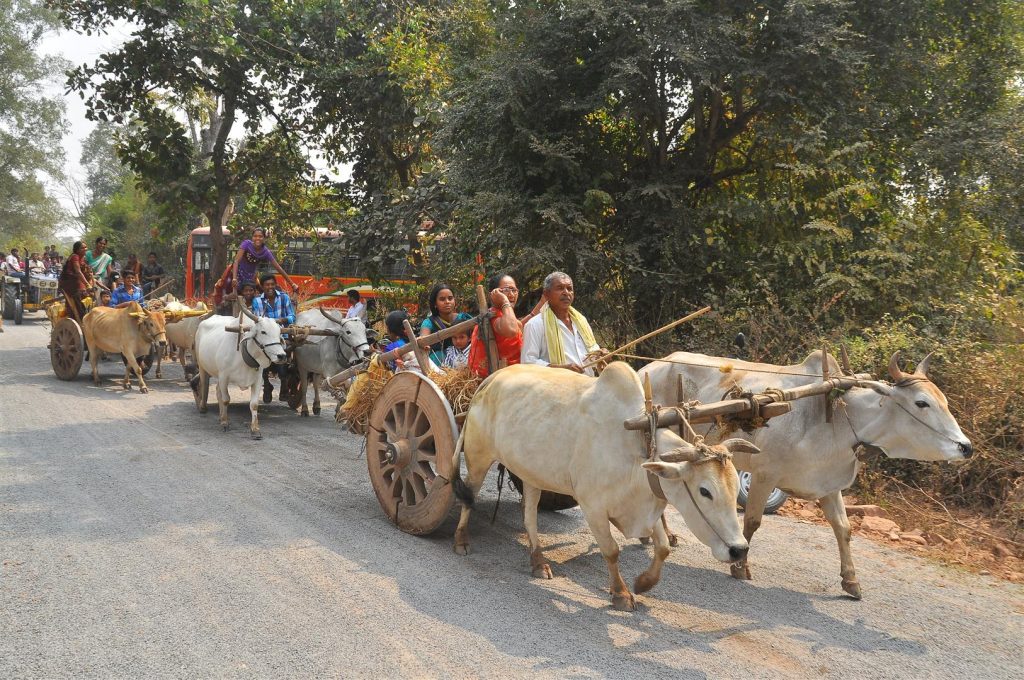
4. Politics: Urban areas are difficult to govern unlike in the rural areas where the Oba or Chief is respected and obeyed.

5. Communication: communication gadgets are often mounted on highland to receive signals which are transmitted through radio television and telephone.

INFLUENCE OF HUMAN BEINGS ON PHYSICAL ENVIRONMENT
1. Land Reclamation: Man can reclaim a farmland from desert through irrigation or fill a swampy area with sand in order to build a house or road.
2. Construction: Man has been able to reduce highland into a lowland for the construction of roads and houses. Bridges are build a house or road.
3. Drainage: Culverts or canals are constructed to direct the movement of water.
4. Afforestation programme: Man has also tried influence the physical environment through the planting of trees to prevent desert encroachment
5. Irrigation: Man has created dams and other water sources to ensure the growth of crops in desert region and during dry season
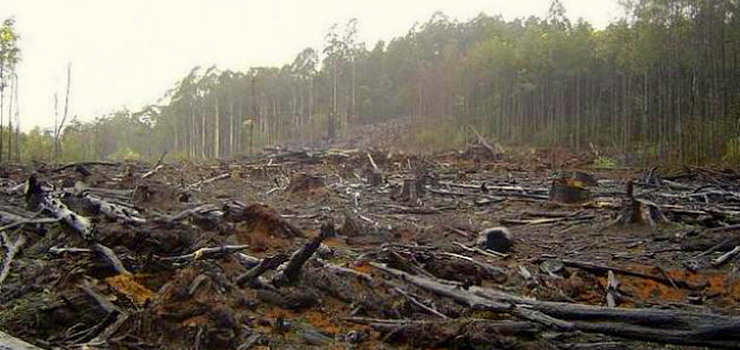
Evaluation:
1. List and explain three ways by which physical environment influence human activities.
2. Mention two ways by which man in turn influences his physical environment.
READING ASSIGNMENT
Read Social studies for Nigerian Junior Secondary Schools book 1 by Remi Aiyede chapter 3 pages 21, 22
ASSIGNMENT
Objective Test:
1. The following are the two types of resources.
a. Renewable and forest b. Renewable and non-renewable c. Mineral and forestry
2. All resources can be renewed when exhausted. True or False
3. Mineral resources can be replenished when used. True or False
4. People living in the riverine areas does …….. occupation
a. Farming b. Fishing c. Driving
5. Which of the following is not a means of transport
a. Air b. water c. house
Essay Test:
1. What are non-renewable resources?
2. State TWO uses of EACH of the following resources:
i. Limestone ii. Coal iii. Petroleum
3 Mention two ways by which man in turn influences his physical environment.
CONTENT:
-Resources in the environment
-Their uses
Resources In Our Environment
Natural resources are those things provided by nature which help to satisfy our needs. These resources occur as liquids, rocks, plants and animals. They may be agricultural or mineral resources. The availability of these resources are very important.

Resources in our physical environment can be classified into two. These are:
Renewable resources
Non renewable resources
a. Renewable resources: Renewable resources can be replaced as they are used. Examples are soil, forest and marine resources.

b. Non- Renewable resources: These are the resources that cannot be renewed when exhausted or used. They include virtually all the solid minerals such as gold, tin, coal, iron ore, columbite etc.

EVALUATION
1. What are natural resources?
2. Identify the TWO types of resources and give TWO examples of each.
USES OF RESOURCES
a. RENEWABLE RESOURCES AND THEIR USES
The vast tropical rain forest is exploited for various uses. The major product exploited in the rainforest is timber which is used for making various household furniture, building boats, etc.


Marine or water resources – Water aids transportation, it is used in generating electricity, used for sporting activities, and serves as the source of some food nutrients.

b. NON RENEWABLE RESOURCES e.g. mineral resources.
Gold – for making jewelries, medals, wrist watches and ornament.
Limestone – for manufacturing cement.
Coal – used as fuel for cooking, for generating electricity, production of heat in steam engines, etc.
Tin ore – for manufacturing containers for packaging food and other materials.
Petroleum – source of fuels for vehicles and engines, bitumen for road construction, chemicals for making plastics, clothing materials, etc.

Subtopic: INFLUENCE OF THE PHYSICAL ENVIRONMENT ON HUMAN ACTIVITIES
1. Local Economy: The physical environment affects the local economy of each community. For instance, cattle rearing is practice in the grassland northern Nigeria by the Fulanis while the ljaws in the riverine areas practice fishing.

2. Religion: The Physical environment also affects the religion of the people. The people who live forest region worship trees like lroko and the god of iron as they use iron implements such as cutlass and hoe.

3. Transport: The transport system of a place is dictated by its physical environment. Canoes, boats or ships are used only where there are rivers, ocean lagoons.

4. Politics: Urban areas are difficult to govern unlike in the rural areas where the Oba or Chief is respected and obeyed.

5. Communication: communication gadgets are often mounted on highland to receive signals which are transmitted through radio television and telephone.

INFLUENCE OF HUMAN BEINGS ON PHYSICAL ENVIRONMENT
1. Land Reclamation: Man can reclaim a farmland from desert through irrigation or fill a swampy area with sand in order to build a house or road.
2. Construction: Man has been able to reduce highland into a lowland for the construction of roads and houses. Bridges are build a house or road.
3. Drainage: Culverts or canals are constructed to direct the movement of water.
4. Afforestation programme: Man has also tried influence the physical environment through the planting of trees to prevent desert encroachment
5. Irrigation: Man has created dams and other water sources to ensure the growth of crops in desert region and during dry season

Evaluation:
1. List and explain three ways by which physical environment influence human activities.
2. Mention two ways by which man in turn influences his physical environment.
READING ASSIGNMENT
Read Social studies for Nigerian Junior Secondary Schools book 1 by Remi Aiyede chapter 3 pages 21, 22
ASSIGNMENT
Objective Test:
1. The following are the two types of resources.
a. Renewable and forest b. Renewable and non-renewable c. Mineral and forestry
2. All resources can be renewed when exhausted. True or False
3. Mineral resources can be replenished when used. True or False
4. People living in the riverine areas does …….. occupation
a. Farming b. Fishing c. Driving
5. Which of the following is not a means of transport
a. Air b. water c. house
Essay Test:
1. What are non-renewable resources?
2. State TWO uses of EACH of the following resources:
i. Limestone ii. Coal iii. Petroleum
3 Mention two ways by which man in turn influences his physical environment.
WEEK 5
TOPIC: ENVIRONMENTAL PROBLEMS
CONTENT: 1. Meaning of Environmental Problem.
2. Types of Environmental Problems.
3. Causes of Environmental Problems.
4. Effects of Environmental Problems on the Society.
Sub-Topic1: Meaning of Environmental Problems.
Environmental problems are the hazards challenges man faces in his environment.
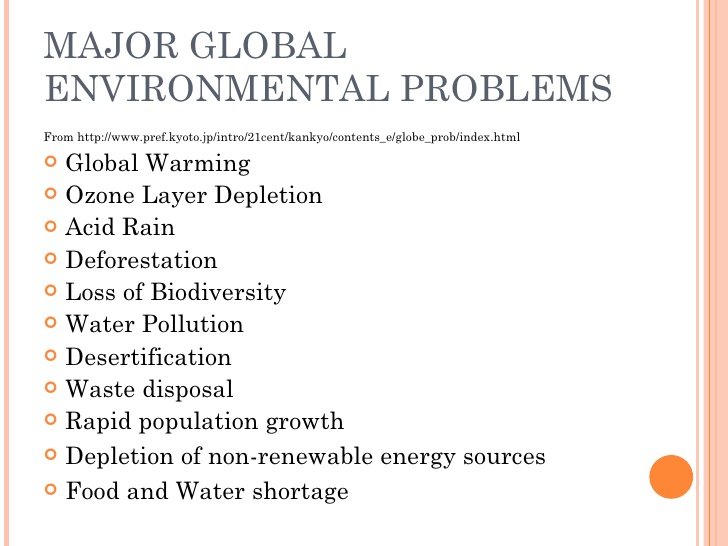
TYPES OF ENVIRONMENTAL PROBLEMS
i. Man-Made or Artificial Environmental Problem.
ii. Natural Environmental Problem.
MAN-MADE / ARTIFICIAL ENVIRONMENTAL PROBLEMS
Pollution (Air pollution, water pollution, soil or land pollution and sound pollution)
i. Air Pollution: refers to the release of an unwanted or dangerous substance into the atmosphere.
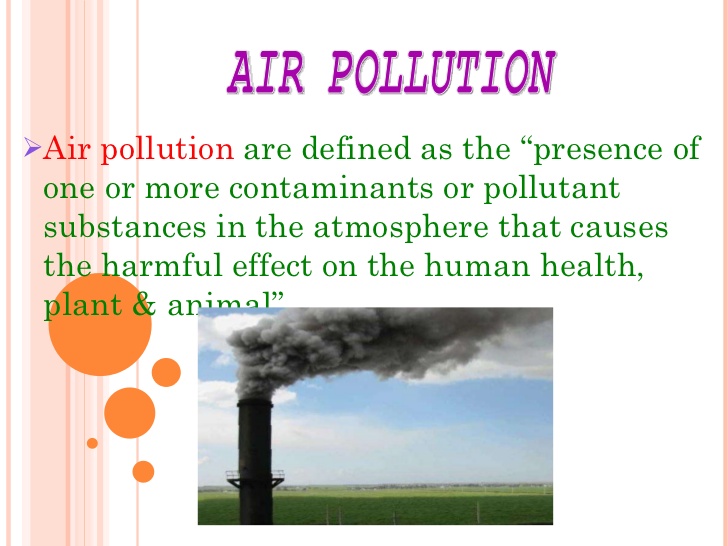
ii. Water Pollution: refers to the contamination of seas, rivers, streams (water bodies).
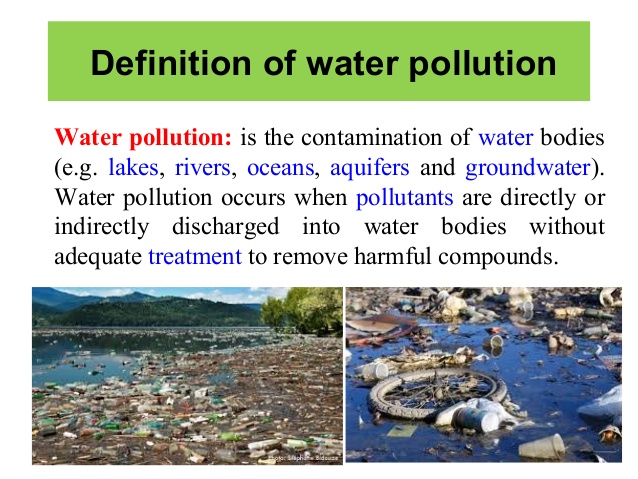
iii. Soil or Land Pollution: occurs when toxic substance or oil spillage come in contact with the land.
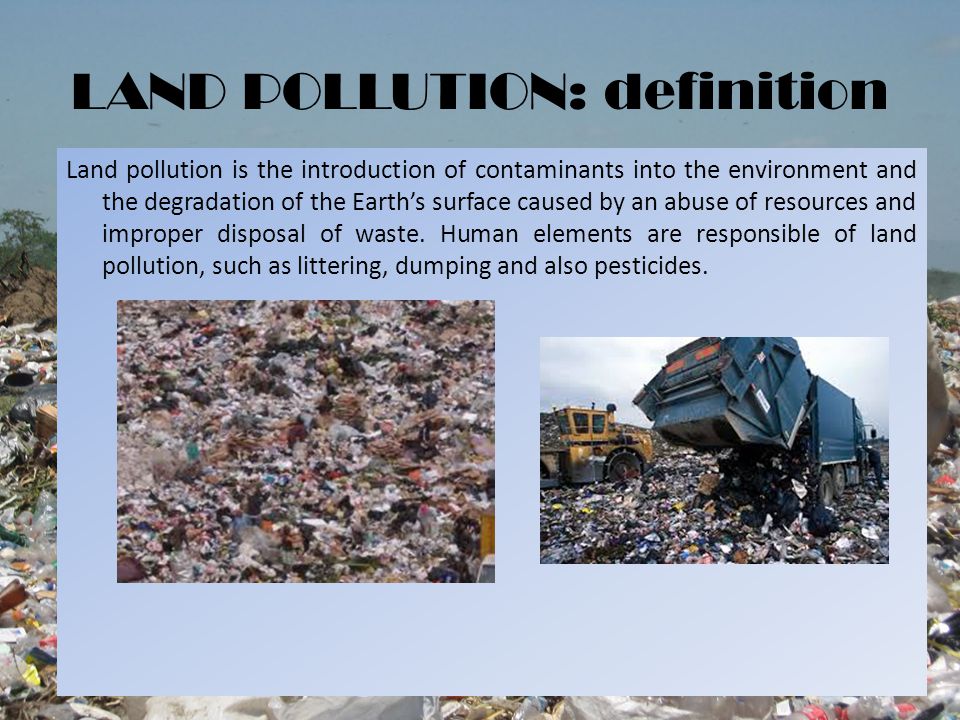
iv. Sound or Noise Pollution: exposure of people or animals to levels of sound that is annoying, stressful, or damaging to the ears.
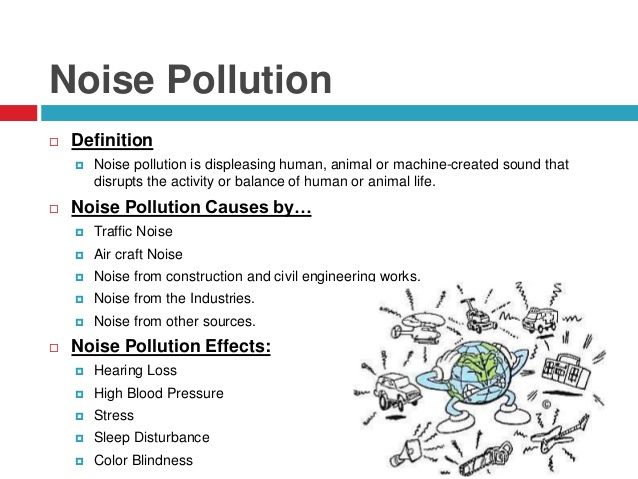
Deforestation: is the act of felling down trees without re-planting. It leads to erosion of the soil and can also increase the incidence of global warming.

a. Sewage disposal: when dirt and refuse are dumped in wrong places, it can cause environmental problems. For example, it can cause flooding if the waterways and channels are blocked.

b. Fire disaster: This usually occurs when fire goes beyond control. It can destroy many things including lives.
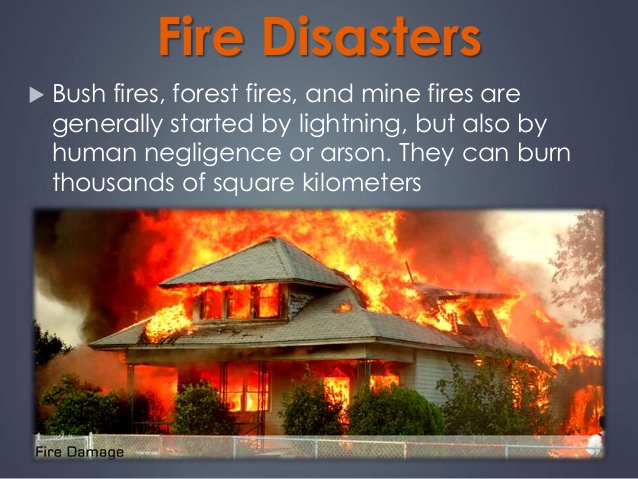
NATURAL ENVIRONMENTAL PROBLEMS:
1. Erosion: is the washing away of the top layers of the soil by flowing water. Man also causes erosion by taking soil from the ground to build house or construct bridges.

2. Drought : refers to a prolong period of dry season in which there is no rainfall. It always result in food shortage.
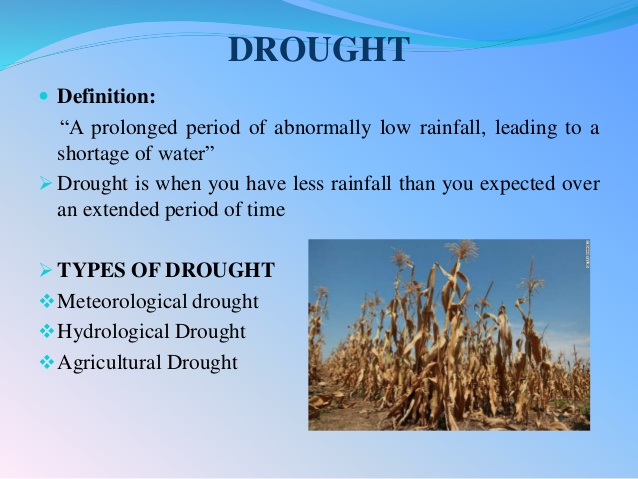
3. Earthquake: this has to do with the vibration, sinking and submerging of the earth’s surface as a result of contraction and expansion of the earth crust due to volcanic eruption. This often results in a lot of damage to buildings, other infrastructures, human and animals’ lives.

4. Flooding: this usually occurs when water bodies extend beyond their banks. It occurs as rivers overflow, this is always as a result of too much rainfall in an area. River flooding has made many people homeless and some lose their lives and properties.
Other natural environmental problems include -
5. Tornado and Hurricane.

6. Flooding.

7. Global Warming.

9. Ocean surge.

CAUSES OF ENVIRONMENTAL PROBLEMS:
The following are some of the causes of environmental problems:
1) Increased world population
2) Poverty
3) Increased production and consumption of material goods.
4) Urbanization
5) Transportation activities
6) Agriculture
7) Climate changes
8) Deforestation
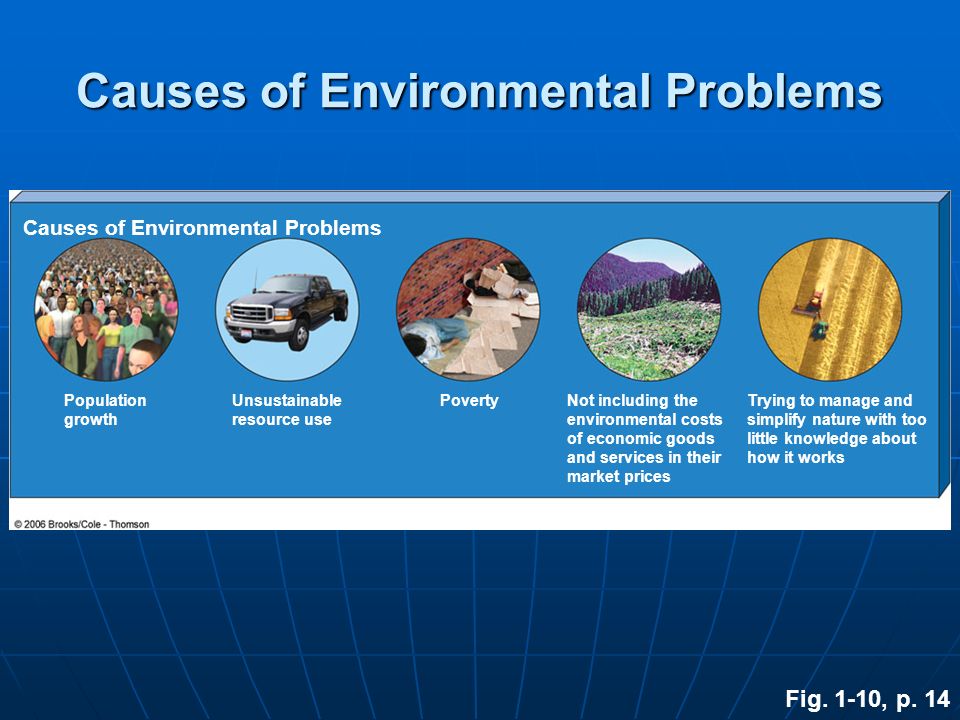
EVALUATION
1) Define environmental problems
2) Identify types of environmental problem.
3) State the causes of environmental problem.
SUB-TOPIC 2: EFFECTS AND SOLUTION TO ENVIRONMENTAL PROBLEMS
Effects of Environmental Problems
- It can lead to poor health condition
- It leads to desertification
- Low agricultural yield
- Poverty
- In areas where irrigation is practiced, irrigated water has made many areas waterlogged.
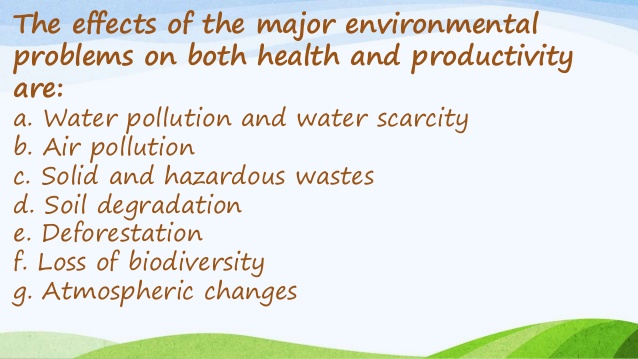
Solutions to the Environmental problems
1) Environmental protection agencies should regulate the disposal of waste and use of noisy gadgets.
2) Environmental sanitation.
3) Poverty alleviation or eradication.
4) Environmental education and punishment of offenders.
5) Afforestation (Trees and plant should be replaced)
6) People should plant trees at home to serve as wind break against storms.
7) Canal should be constructed in flood prone areas to control the movement of water.

OUTING ACTIVITY: Students are to go on mini –excursion within their premises or area to observe the dumping of refuse, erosion, oil spillage and lot more.
EVALUATION:
1. Report the effects of environmental problem on the society.
2. Describe solutions of these problems.
READING ASSIGNMENT
Read social studies for Nigerian Junior Secondary Schools by E Remi Aiyede Chapter 4 pages 29-36.
ASSIGNMENT
OBJECTIVE TEST:
1) Which of the following is a natural environmental problem? (a) Pollution (b) Deforestation (c) Drought
2) The following are types of environmental problems except…… (a)
3) Which of the following is not an effect of environmental problems?
(a) Poor health condition (b) Poverty (c) afforestation (d) Desertification
4) Desertification can be controlled or reduced in our environment by …… (a) replanting cut trees (b) making wide channels for erosion (c) Dumping of refuse in public places to conserve the soil (d) setting fire on stubborn trees annually.
1) Overgrazing can cause …… (a) fire outbreak (b) desertification (c) drought (d) air pollution
Essay Test:
(1) State two effects of environmental problems on the society.
(2) Suggest two solutions to environmental problems.
(3) Explain any three natural environmental problems.
CONTENT: 1. Meaning of Environmental Problem.
2. Types of Environmental Problems.
3. Causes of Environmental Problems.
4. Effects of Environmental Problems on the Society.
Sub-Topic1: Meaning of Environmental Problems.
Environmental problems are the hazards challenges man faces in his environment.

TYPES OF ENVIRONMENTAL PROBLEMS
i. Man-Made or Artificial Environmental Problem.
ii. Natural Environmental Problem.
MAN-MADE / ARTIFICIAL ENVIRONMENTAL PROBLEMS
Pollution (Air pollution, water pollution, soil or land pollution and sound pollution)
i. Air Pollution: refers to the release of an unwanted or dangerous substance into the atmosphere.

ii. Water Pollution: refers to the contamination of seas, rivers, streams (water bodies).

iii. Soil or Land Pollution: occurs when toxic substance or oil spillage come in contact with the land.

iv. Sound or Noise Pollution: exposure of people or animals to levels of sound that is annoying, stressful, or damaging to the ears.

Deforestation: is the act of felling down trees without re-planting. It leads to erosion of the soil and can also increase the incidence of global warming.

a. Sewage disposal: when dirt and refuse are dumped in wrong places, it can cause environmental problems. For example, it can cause flooding if the waterways and channels are blocked.

b. Fire disaster: This usually occurs when fire goes beyond control. It can destroy many things including lives.

NATURAL ENVIRONMENTAL PROBLEMS:
1. Erosion: is the washing away of the top layers of the soil by flowing water. Man also causes erosion by taking soil from the ground to build house or construct bridges.

2. Drought : refers to a prolong period of dry season in which there is no rainfall. It always result in food shortage.

3. Earthquake: this has to do with the vibration, sinking and submerging of the earth’s surface as a result of contraction and expansion of the earth crust due to volcanic eruption. This often results in a lot of damage to buildings, other infrastructures, human and animals’ lives.

4. Flooding: this usually occurs when water bodies extend beyond their banks. It occurs as rivers overflow, this is always as a result of too much rainfall in an area. River flooding has made many people homeless and some lose their lives and properties.
Other natural environmental problems include -
5. Tornado and Hurricane.

6. Flooding.

7. Global Warming.

9. Ocean surge.

CAUSES OF ENVIRONMENTAL PROBLEMS:
The following are some of the causes of environmental problems:
1) Increased world population
2) Poverty
3) Increased production and consumption of material goods.
4) Urbanization
5) Transportation activities
6) Agriculture
7) Climate changes
8) Deforestation

EVALUATION
1) Define environmental problems
2) Identify types of environmental problem.
3) State the causes of environmental problem.
SUB-TOPIC 2: EFFECTS AND SOLUTION TO ENVIRONMENTAL PROBLEMS
Effects of Environmental Problems
- It can lead to poor health condition
- It leads to desertification
- Low agricultural yield
- Poverty
- In areas where irrigation is practiced, irrigated water has made many areas waterlogged.

Solutions to the Environmental problems
1) Environmental protection agencies should regulate the disposal of waste and use of noisy gadgets.
2) Environmental sanitation.
3) Poverty alleviation or eradication.
4) Environmental education and punishment of offenders.
5) Afforestation (Trees and plant should be replaced)
6) People should plant trees at home to serve as wind break against storms.
7) Canal should be constructed in flood prone areas to control the movement of water.

OUTING ACTIVITY: Students are to go on mini –excursion within their premises or area to observe the dumping of refuse, erosion, oil spillage and lot more.
EVALUATION:
1. Report the effects of environmental problem on the society.
2. Describe solutions of these problems.
READING ASSIGNMENT
Read social studies for Nigerian Junior Secondary Schools by E Remi Aiyede Chapter 4 pages 29-36.
ASSIGNMENT
OBJECTIVE TEST:
1) Which of the following is a natural environmental problem? (a) Pollution (b) Deforestation (c) Drought
2) The following are types of environmental problems except…… (a)
3) Which of the following is not an effect of environmental problems?
(a) Poor health condition (b) Poverty (c) afforestation (d) Desertification
4) Desertification can be controlled or reduced in our environment by …… (a) replanting cut trees (b) making wide channels for erosion (c) Dumping of refuse in public places to conserve the soil (d) setting fire on stubborn trees annually.
1) Overgrazing can cause …… (a) fire outbreak (b) desertification (c) drought (d) air pollution
Essay Test:
(1) State two effects of environmental problems on the society.
(2) Suggest two solutions to environmental problems.
(3) Explain any three natural environmental problems.
WEEK 6
TOPIC: - Social Environment.
CONTENT:
-Meaning and types of social environment
-Primary social groups.
-Role and responsibilities of members.
Meaning And Types Of Social Environment.
Social environment simply means the man, everything man has made and is relationship with his fellow man.
Since man cannot live in isolation of other people, he must co-operate among other human beings. Man’s social environment includes his home, the school he attends, his office, his place of worship like church or mosque etc.
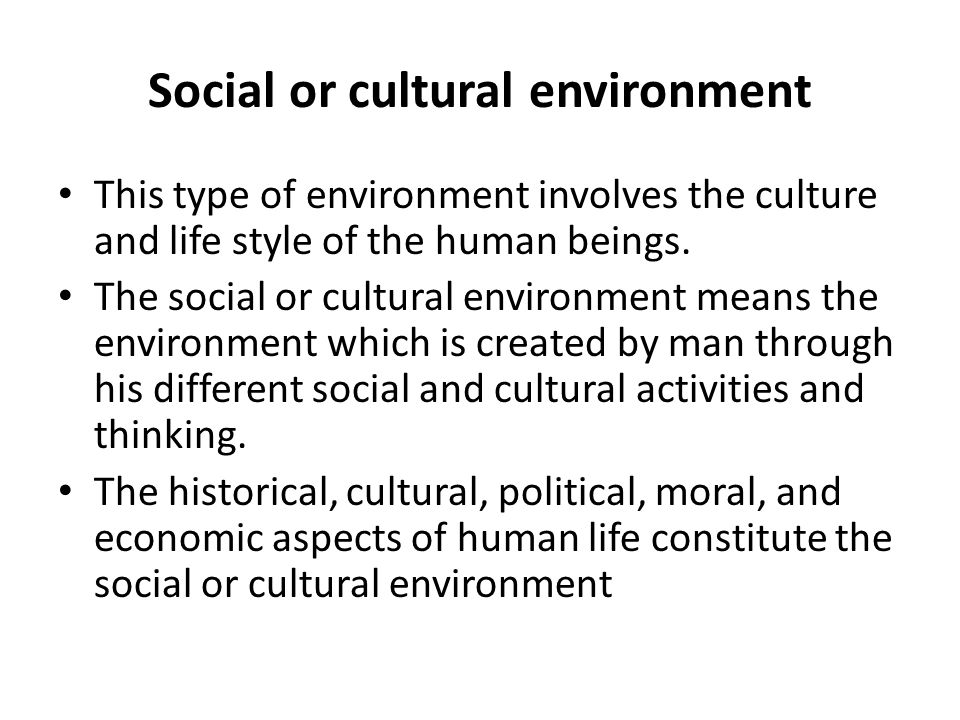
Social Group
The term social group refers to a number of people who maintain common interest. There are two types of social groups:-
1) Primary social group
2) Secondary social group

TYPES OF PRIMARY SOCIAL GROUPS
Primary social group is a group in which the members know themselves very well. They are very close to one another and also have face to face intimate relationship.
Examples of primary groups are:-
1) Family
2) Age grades
3) Age mates
4) Kindred
5) Village community

EVALUATION
1) Define social group
2) List five examples of primary group
Further Studies
http://www.slideshare.net/clarence1723/ ... ary-groups
http://www.zeepedia.com/read.php?social ... y&b=99&c=7
http://www.marxists.org/reference/archi ... 5-s04.html
ROLES AND RESPONSIBILITIES OF PRIMARY GROUP
In the family both parents and their children have roles and responsibilities. Family is a group of people related by blood or marriage. We have two types of family.
1) Nuclear family e.g. Father, Mother and children
2) Extended family e.g. a collection of two or more families.
- The parents are responsible for giving birth to the children.
- The father provides for the family.
- Mother cares for the family
- both parents should assist one another and show love to the members of the family
- the children must obey their parents, run errands for them, do their assignment and other duties at home.
- they must learn to love each other
- the children must be good and make their parents happy.

EVALUATION:
1. What is family?
2. Mention three of your role to your parent
READING ASSIGNMENT
Read Macmillan JSS social studies bk. 1 by M.A. Orebanjo.
Chapter four, pages 19-22.
ASSIGNMENT
OBJECTIVE
1) Social environment is made up of :-
a) Home and mountains
b) Hills and rivers
c) Home, religious institution
2) A group of people in which members know each other very well is known as
a) Voluntary group
b) Secondary group
c) Primary group
3) ___________ refers to people who maintain common interest?
(a) student
(b) parents and the society
(c) Social group.
THEORY
(1) State three responsibilities of children at home. Mention the two social groups you know.
SPECIFIC TOPIC: MEANING OF FAMILY AND TYPES.
REFERENCE BOOKS: Social Studies for Nigerian JSS Book 1, by Remi E. Aiyede Et al. Basic Social Studies for Nigeria Secondary Schools by Anikpo et al. Simplified Social Studies for JSS by Ogunwale A.
PERFORMANCE OBJECTIVES: At the end of the lesson, the students should be able to:
1. define a family.
2. list the types of family.
CONTENTS:
FAMILY.
The family is a group of one or two parents with or without children and close relations.
TYPES OF FAMILY.
There are two main types of family and they are:
1. NUCLEAR FAMILY: This type of family consists of a husband, one wife and childen. This is the simplest form of amily and very common in Europe and North America.

2. EXTENDED FAMILY: This type of family is large i.e. a man with his wife/ wives, children and other relations. This type of family is common in Africa and most especially in Nigeria.

KINSHIP.
Kinship is when two people have the same parents or the same grand-parents they are referred to as kins. they are blood related either by father or mother.

EVALUATION/ CLASSWORK:
1. What is a family?
2. List the types of family you have been taught.
further studies
http://www.edu.pe.ca/southernkings/familytypes.htm
http://family.lovetoknow.com/about-fami ... structures
MAIN TOPIC: FAMILY.
SPECIFIC TOPIC: FUNCTIONS AND ROLES OF A FATHER.
REFERENCE BOOKS: Social Studies for Nigerian JSS Book 1, by Remi E. Aiyede Et al. Basic Social Studies For Nigeria Secondary Schools by Anikpo et al. Simplified Social Studies for JSS by Ogunwale A.
PERFORMANCE OBJECTIVES: At the end of the lesson, the students should be able to:
1. list the functions of a father.
2. explain the role of a mother in the house.
CONTENTS:
FUNCTIONS AND ROLES OF FATHER.
1. He provides the food and shelter for the family.
2. As the leader of the house, he assumes the duty of a disciplinarian.
3. He provides for the education of the children.
4. He makes important decisions in the family.
5. He provides money and security for the family.

FUNCTIONS AND ROLES OF MOTHER.
1. The mother helps the husband whenever there is the need.
2. She keeps the house clean by being the head of sanitation team in the family.
3. By nurturing and raising the children to a very good standard.
4. She assists the father in upholding discipline in the family.
5. Processing food and keeping the house in order.

EVALUATION/ CLASSWORK:
1. List the functions of a father at home.
2. Explain the role a mother will play in a home.
ASSIGNMENT:
List and explain your roles as a child in your family.
MAIN TOPIC: FAMILY.
SPECIFIC TOPIC: FUNCTIONS AND ROLES OF CHILDREN.
REFERENCE BOOK S: Social Studies for Nigerian JSS Book 1, by Remi E. Aiyede Et al. Basic Social Studies for Nigeria Secondary Schools by Anikpo et al. Simplified Social Studies for JSS by Ogunwale A.
PERFORMANCE OBJECTIVES: At the end of the lesson, the students should be able to:
1. explain the roles of children in the family.
2. list the roles of family in a community.
CONTENTS:
FUNCTIONS AND ROLES OF CHILDREN.
1. They are to obey their parents.
2. Helping and assisting the parents in any aspects they may be needed.
3. Helps the parents in the garden or farm.
4. To make their parents happy all the time.
5. To face their education properly and get good grades in school.
6. To assist in developing the community they belong to i.e. environment cleanliness.

FUNCTIONS OF A FAMILY IN A COMMUNITY.
1. The family assists in educating the people in the society.
2. The family helps in communal development.
3. The family assists in raising standard of discipline in the society.
4. Family assists in settling dispute in a community.
5. The family helps in increasing the populating the community through child bearing.
6. The family pays tax to assist government in providing essential and basic needs in the community.
7. The family assists the community in terms of security of lives and properties.

EVALUATION/ CLASSWORK:
1. What are roles of children in the family?
2. List the functions of a family in the community.
HOME WORK/ ASSIGNMENT:
Draw and label the family tree in your note.
further studies
http://family.wikinut.com/Roles-and-Res ... /1lczpas4/
http://www.angelfire.com/psy/famroles_r ... rolesresp/
CONTENT:
-Meaning and types of social environment
-Primary social groups.
-Role and responsibilities of members.
Meaning And Types Of Social Environment.
Social environment simply means the man, everything man has made and is relationship with his fellow man.
Since man cannot live in isolation of other people, he must co-operate among other human beings. Man’s social environment includes his home, the school he attends, his office, his place of worship like church or mosque etc.

Social Group
The term social group refers to a number of people who maintain common interest. There are two types of social groups:-
1) Primary social group
2) Secondary social group

TYPES OF PRIMARY SOCIAL GROUPS
Primary social group is a group in which the members know themselves very well. They are very close to one another and also have face to face intimate relationship.
Examples of primary groups are:-
1) Family
2) Age grades
3) Age mates
4) Kindred
5) Village community

EVALUATION
1) Define social group
2) List five examples of primary group
Further Studies
http://www.slideshare.net/clarence1723/ ... ary-groups
http://www.zeepedia.com/read.php?social ... y&b=99&c=7
http://www.marxists.org/reference/archi ... 5-s04.html
ROLES AND RESPONSIBILITIES OF PRIMARY GROUP
In the family both parents and their children have roles and responsibilities. Family is a group of people related by blood or marriage. We have two types of family.
1) Nuclear family e.g. Father, Mother and children
2) Extended family e.g. a collection of two or more families.
- The parents are responsible for giving birth to the children.
- The father provides for the family.
- Mother cares for the family
- both parents should assist one another and show love to the members of the family
- the children must obey their parents, run errands for them, do their assignment and other duties at home.
- they must learn to love each other
- the children must be good and make their parents happy.

EVALUATION:
1. What is family?
2. Mention three of your role to your parent
READING ASSIGNMENT
Read Macmillan JSS social studies bk. 1 by M.A. Orebanjo.
Chapter four, pages 19-22.
ASSIGNMENT
OBJECTIVE
1) Social environment is made up of :-
a) Home and mountains
b) Hills and rivers
c) Home, religious institution
2) A group of people in which members know each other very well is known as
a) Voluntary group
b) Secondary group
c) Primary group
3) ___________ refers to people who maintain common interest?
(a) student
(b) parents and the society
(c) Social group.
THEORY
(1) State three responsibilities of children at home. Mention the two social groups you know.
SPECIFIC TOPIC: MEANING OF FAMILY AND TYPES.
REFERENCE BOOKS: Social Studies for Nigerian JSS Book 1, by Remi E. Aiyede Et al. Basic Social Studies for Nigeria Secondary Schools by Anikpo et al. Simplified Social Studies for JSS by Ogunwale A.
PERFORMANCE OBJECTIVES: At the end of the lesson, the students should be able to:
1. define a family.
2. list the types of family.
CONTENTS:
FAMILY.
The family is a group of one or two parents with or without children and close relations.
TYPES OF FAMILY.
There are two main types of family and they are:
1. NUCLEAR FAMILY: This type of family consists of a husband, one wife and childen. This is the simplest form of amily and very common in Europe and North America.

2. EXTENDED FAMILY: This type of family is large i.e. a man with his wife/ wives, children and other relations. This type of family is common in Africa and most especially in Nigeria.

KINSHIP.
Kinship is when two people have the same parents or the same grand-parents they are referred to as kins. they are blood related either by father or mother.

EVALUATION/ CLASSWORK:
1. What is a family?
2. List the types of family you have been taught.
further studies
http://www.edu.pe.ca/southernkings/familytypes.htm
http://family.lovetoknow.com/about-fami ... structures
MAIN TOPIC: FAMILY.
SPECIFIC TOPIC: FUNCTIONS AND ROLES OF A FATHER.
REFERENCE BOOKS: Social Studies for Nigerian JSS Book 1, by Remi E. Aiyede Et al. Basic Social Studies For Nigeria Secondary Schools by Anikpo et al. Simplified Social Studies for JSS by Ogunwale A.
PERFORMANCE OBJECTIVES: At the end of the lesson, the students should be able to:
1. list the functions of a father.
2. explain the role of a mother in the house.
CONTENTS:
FUNCTIONS AND ROLES OF FATHER.
1. He provides the food and shelter for the family.
2. As the leader of the house, he assumes the duty of a disciplinarian.
3. He provides for the education of the children.
4. He makes important decisions in the family.
5. He provides money and security for the family.

FUNCTIONS AND ROLES OF MOTHER.
1. The mother helps the husband whenever there is the need.
2. She keeps the house clean by being the head of sanitation team in the family.
3. By nurturing and raising the children to a very good standard.
4. She assists the father in upholding discipline in the family.
5. Processing food and keeping the house in order.

EVALUATION/ CLASSWORK:
1. List the functions of a father at home.
2. Explain the role a mother will play in a home.
ASSIGNMENT:
List and explain your roles as a child in your family.
MAIN TOPIC: FAMILY.
SPECIFIC TOPIC: FUNCTIONS AND ROLES OF CHILDREN.
REFERENCE BOOK S: Social Studies for Nigerian JSS Book 1, by Remi E. Aiyede Et al. Basic Social Studies for Nigeria Secondary Schools by Anikpo et al. Simplified Social Studies for JSS by Ogunwale A.
PERFORMANCE OBJECTIVES: At the end of the lesson, the students should be able to:
1. explain the roles of children in the family.
2. list the roles of family in a community.
CONTENTS:
FUNCTIONS AND ROLES OF CHILDREN.
1. They are to obey their parents.
2. Helping and assisting the parents in any aspects they may be needed.
3. Helps the parents in the garden or farm.
4. To make their parents happy all the time.
5. To face their education properly and get good grades in school.
6. To assist in developing the community they belong to i.e. environment cleanliness.

FUNCTIONS OF A FAMILY IN A COMMUNITY.
1. The family assists in educating the people in the society.
2. The family helps in communal development.
3. The family assists in raising standard of discipline in the society.
4. Family assists in settling dispute in a community.
5. The family helps in increasing the populating the community through child bearing.
6. The family pays tax to assist government in providing essential and basic needs in the community.
7. The family assists the community in terms of security of lives and properties.

EVALUATION/ CLASSWORK:
1. What are roles of children in the family?
2. List the functions of a family in the community.
HOME WORK/ ASSIGNMENT:
Draw and label the family tree in your note.
further studies
http://family.wikinut.com/Roles-and-Res ... /1lczpas4/
http://www.angelfire.com/psy/famroles_r ... rolesresp/
WEEK 7
TOPIC: Social Environment
CONTENT:
Secondary Social Groups:
- Types and structure of secondary social group
- Roles and responsibilities of members.
SUB-TOPIC:- Types and Structure of Secondary Social group.
Secondary social group can be defined as a large number of people who are not related to one another but came together to achieve common goal.
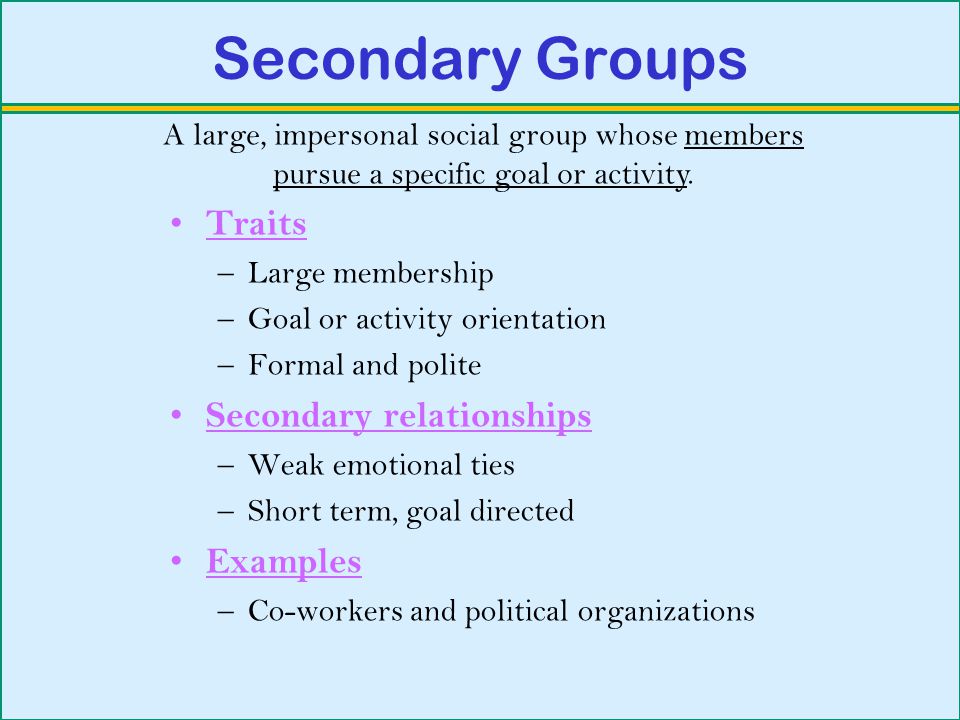
TYPES OF SECONDARY SOCIAL GROUP
The following are types of secondary social group.
1) Trade unions
2) Schools
3) Churches
4) Clubs
5) Industries
6) Political parties
7) Pressure groups e. g. NUT, NMA, NLC etc
Voluntary organizations like the Red Cross, Society, Boy Brigade etc.

Structure of Secondary Social Group
- The membership cuts across the membership of primary groups. That is, it is a mixture of people with different social background for example a political party is made up of people from different tribes in the country e.g. Hausa, Igbo and Yoruba.
- The membership is large i.e. they are many.
- Membership is voluntary and less permanent. i.e. members can withdraw their membership at anytime.

EVALUATION:
(1) What is secondary social group?
(2) List four examples or types of secondary social group.
Sub-Topic: ROLES AND RESPONSIBILITIES OF MEMBERS
1. In secondary social group members agree to elect their leaders.
2. It brings about unity in the society. For example those who belong to an organization Football team.
3. It enables some people to share their experiences and knowledge with those that do not have.
4. The group serves as avenue for establishing friendly relations.
INFLUENCE OF THE SOCIAL ENVIRONMENT ON HUMAN BEING
The social environment influences man because man tends to copy those people who live around him. For instance;
a. A person may change the type of food he eats if he lives outside his cultural area. A Yoruba man may start eating “tuwo” in Kaduna.
b. The quality of leader either in a family, organization, local state or Federal Government is influenced by the social environment.
c. A person in bad company may be influenced by the bad practice of such company e.g. stealing, drug abuse, prostitution etc.
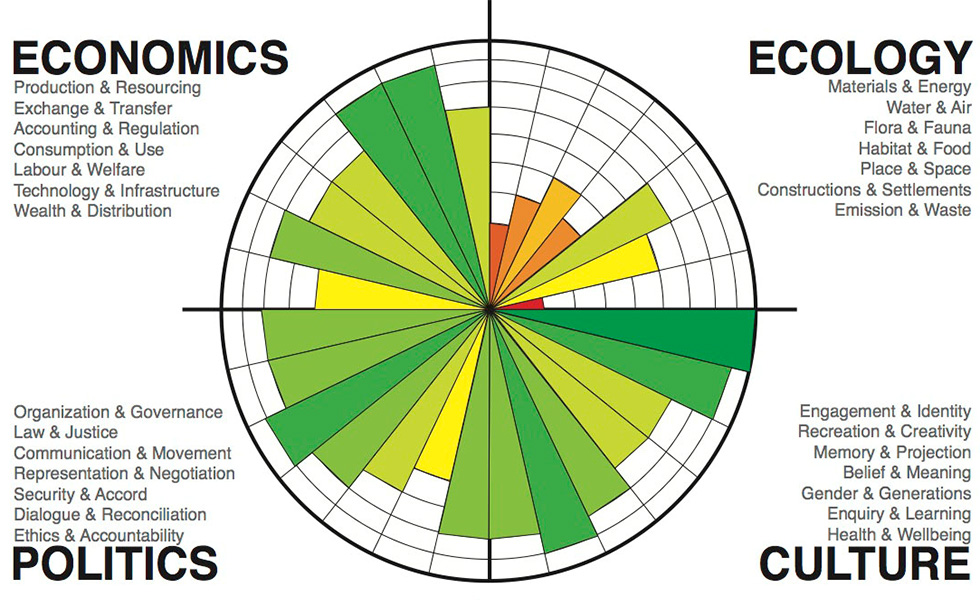
INFLUENCE OF THE MAN ON SOCIAL ENVIRONMENT
a. An educate person can enlighten the people on the issue of sanitation and hygiene.
b. Public figures like politicians and musicians influence the way people dresses, that is people tends to copy the way these people dress.
c. Man has also influence his social environment negatively. There is high rate of crime, immorality, child abuse and religious violence, spreading of rumours, Etc.

EVALUATION:
1. Highlight two ways by which social environment influence man
2. Mention two ways you can influence your social environment
Reading Assignment:
Read Macmillan JSS Social Studies Bk. 1 by M.A. Orebanjo 2 co
Chapter 4, pages 23-24.
ASSIGNMENT
OBJECTIVE
1) The two types of social groups are:-
a) Primary and Secondary
b) Nursery and Primary
c) Family and Kinship.
2) Examples of secondary groups are:-
A) Family age groups and kinship.
B) Club, family kinship.
C) Clubs, political parties and trade unions
3) Secondary group brings conflict to the society. True or False.
4) ……… influence man in his social environment.
a. Plant b. River c. Follow man
5) Man has also influence his social environment negatively. True or False
THEORY
1) Differentiate between primary and secondary group.
2) State two roles and responsibilities of secondary social group.
TOPIC: Social Environment
CONTENT: -Meaning of conflict
- Causes and effects of conflict within social group.
- Steps in conflict resolution.
Meaning of conflict
Conflict can be defined as a state of disagreement or argument between people, groups or countries.

Causes and effects of conflict.

CAUSES
The following are the causes of conflict:-
1) Lack of co-operation among members.
2) Cheating.
3) Lack of human consideration.
4) Injustice and attempt to impose ones will on others.
5) Selfishness within the social group
6) Corruption
7) Smuggling
8) War.

EFFECTS:
1) Conflict brings about lack of unity.
2) It can lead to breakdown of law and order in the society.
3) The society will not progress.
4) It can lead to loss of life and property.
5) The group will not be able to work together to achieve their common goal.
6) It leads to frustration.
7) There will be enmity among family members or group.

EVALUATION:
1) Define conflict.
2) State three effects of conflict within the group.
Sub-Topic – Steps in conflict resolution.
1) Educating people on the need to tolerate one another.
2) People should be encouraged to obey rule and regulation of the society.
3) Provision of goods and services to meet the needs of the people e.g. food, kerosene etc.
4) People should pay more attention to the unity of the country as against their ethnic origins and religious affiliations.
5) Involvement of legal institutions e.g. police.

EVALUATION:
1. What is conflict?
2. List three causes of conflict
Reading Assignment
Read Lantern Comprehensive Social Studies Book 1: By K.A. Salawu T.O. Olatoye 2. Theme 2. Pages 12-15.
Objective questions:
1) The following are causes of conflict except:-
a) Lack of cooperative.
b) Love for others.
c) Religious intolerance.
2) Conflict can be resolved through smuggling of goods into the country so that people can have enough food to eat. True or False.
3) One of the following is an effect of conflict:- (i) Unity (ii) Co-operation (iii) Loss of life and property.
Theory questions:
(1) State five causes of conflict among people.
(2) Mention two ways for conflict resolution.
http://www.hawaii.edu/powerkills/TCH.CHAP27.HTM
http://www.mega.nu/ampp/rummel/tch.chap24.htm
http://www.nigeriansinamerica.com/artic ... Page2.html
CONTENT:
Secondary Social Groups:
- Types and structure of secondary social group
- Roles and responsibilities of members.
SUB-TOPIC:- Types and Structure of Secondary Social group.
Secondary social group can be defined as a large number of people who are not related to one another but came together to achieve common goal.

TYPES OF SECONDARY SOCIAL GROUP
The following are types of secondary social group.
1) Trade unions
2) Schools
3) Churches
4) Clubs
5) Industries
6) Political parties
7) Pressure groups e. g. NUT, NMA, NLC etc
Voluntary organizations like the Red Cross, Society, Boy Brigade etc.

Structure of Secondary Social Group
- The membership cuts across the membership of primary groups. That is, it is a mixture of people with different social background for example a political party is made up of people from different tribes in the country e.g. Hausa, Igbo and Yoruba.
- The membership is large i.e. they are many.
- Membership is voluntary and less permanent. i.e. members can withdraw their membership at anytime.

EVALUATION:
(1) What is secondary social group?
(2) List four examples or types of secondary social group.
Sub-Topic: ROLES AND RESPONSIBILITIES OF MEMBERS
1. In secondary social group members agree to elect their leaders.
2. It brings about unity in the society. For example those who belong to an organization Football team.
3. It enables some people to share their experiences and knowledge with those that do not have.
4. The group serves as avenue for establishing friendly relations.
INFLUENCE OF THE SOCIAL ENVIRONMENT ON HUMAN BEING
The social environment influences man because man tends to copy those people who live around him. For instance;
a. A person may change the type of food he eats if he lives outside his cultural area. A Yoruba man may start eating “tuwo” in Kaduna.
b. The quality of leader either in a family, organization, local state or Federal Government is influenced by the social environment.
c. A person in bad company may be influenced by the bad practice of such company e.g. stealing, drug abuse, prostitution etc.

INFLUENCE OF THE MAN ON SOCIAL ENVIRONMENT
a. An educate person can enlighten the people on the issue of sanitation and hygiene.
b. Public figures like politicians and musicians influence the way people dresses, that is people tends to copy the way these people dress.
c. Man has also influence his social environment negatively. There is high rate of crime, immorality, child abuse and religious violence, spreading of rumours, Etc.

EVALUATION:
1. Highlight two ways by which social environment influence man
2. Mention two ways you can influence your social environment
Reading Assignment:
Read Macmillan JSS Social Studies Bk. 1 by M.A. Orebanjo 2 co
Chapter 4, pages 23-24.
ASSIGNMENT
OBJECTIVE
1) The two types of social groups are:-
a) Primary and Secondary
b) Nursery and Primary
c) Family and Kinship.
2) Examples of secondary groups are:-
A) Family age groups and kinship.
B) Club, family kinship.
C) Clubs, political parties and trade unions
3) Secondary group brings conflict to the society. True or False.
4) ……… influence man in his social environment.
a. Plant b. River c. Follow man
5) Man has also influence his social environment negatively. True or False
THEORY
1) Differentiate between primary and secondary group.
2) State two roles and responsibilities of secondary social group.
TOPIC: Social Environment
CONTENT: -Meaning of conflict
- Causes and effects of conflict within social group.
- Steps in conflict resolution.
Meaning of conflict
Conflict can be defined as a state of disagreement or argument between people, groups or countries.

Causes and effects of conflict.

CAUSES
The following are the causes of conflict:-
1) Lack of co-operation among members.
2) Cheating.
3) Lack of human consideration.
4) Injustice and attempt to impose ones will on others.
5) Selfishness within the social group
6) Corruption
7) Smuggling
8) War.

EFFECTS:
1) Conflict brings about lack of unity.
2) It can lead to breakdown of law and order in the society.
3) The society will not progress.
4) It can lead to loss of life and property.
5) The group will not be able to work together to achieve their common goal.
6) It leads to frustration.
7) There will be enmity among family members or group.

EVALUATION:
1) Define conflict.
2) State three effects of conflict within the group.
Sub-Topic – Steps in conflict resolution.
1) Educating people on the need to tolerate one another.
2) People should be encouraged to obey rule and regulation of the society.
3) Provision of goods and services to meet the needs of the people e.g. food, kerosene etc.
4) People should pay more attention to the unity of the country as against their ethnic origins and religious affiliations.
5) Involvement of legal institutions e.g. police.

EVALUATION:
1. What is conflict?
2. List three causes of conflict
Reading Assignment
Read Lantern Comprehensive Social Studies Book 1: By K.A. Salawu T.O. Olatoye 2. Theme 2. Pages 12-15.
Objective questions:
1) The following are causes of conflict except:-
a) Lack of cooperative.
b) Love for others.
c) Religious intolerance.
2) Conflict can be resolved through smuggling of goods into the country so that people can have enough food to eat. True or False.
3) One of the following is an effect of conflict:- (i) Unity (ii) Co-operation (iii) Loss of life and property.
Theory questions:
(1) State five causes of conflict among people.
(2) Mention two ways for conflict resolution.
http://www.hawaii.edu/powerkills/TCH.CHAP27.HTM
http://www.mega.nu/ampp/rummel/tch.chap24.htm
http://www.nigeriansinamerica.com/artic ... Page2.html
WEEK 8
MAIN TOPIC: PHYSICAL ENVIRONMENT.
SPECIFIC TOPIC: FEATURES OF PHYSICAL ENVIRONMENT.
REFERENCE BOOK S: Social Studies for Nigerian JSS Book 1, by Remi E. Aiyede Et al. Basic Social Studies for Nigeria Secondary Schools by Anikpo et al. Simplified Social Studies for JSS by Ogunwale A.
PERFORMANCE OBJECTIVES: At the end of the lesson, the students should be able to:
1. list the features of physical environment.
2. explain some of the features of physical environment.
CONTENTS:
FEATURES OF PHYSICAL ENVIRONMENT
The main features of our physical environment are:
1. The earth's crust "lithosphere" - This is the continents, land and ocean floor.

2. The water bodies "hydrosphere" - This is water bodies of ocean, seas and rivers e.t.c.

3. The atmosphere- This is the blanket of air made up of different types of gases.
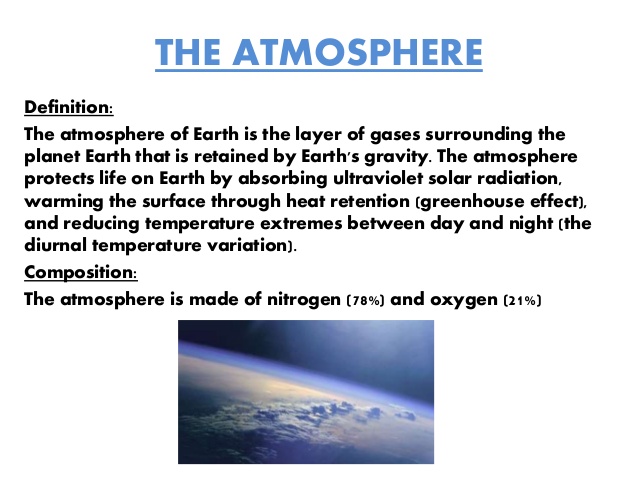
4. Rocks- There are three types of rocks i.e. igneous, sedimentary and metamorphic rocks.
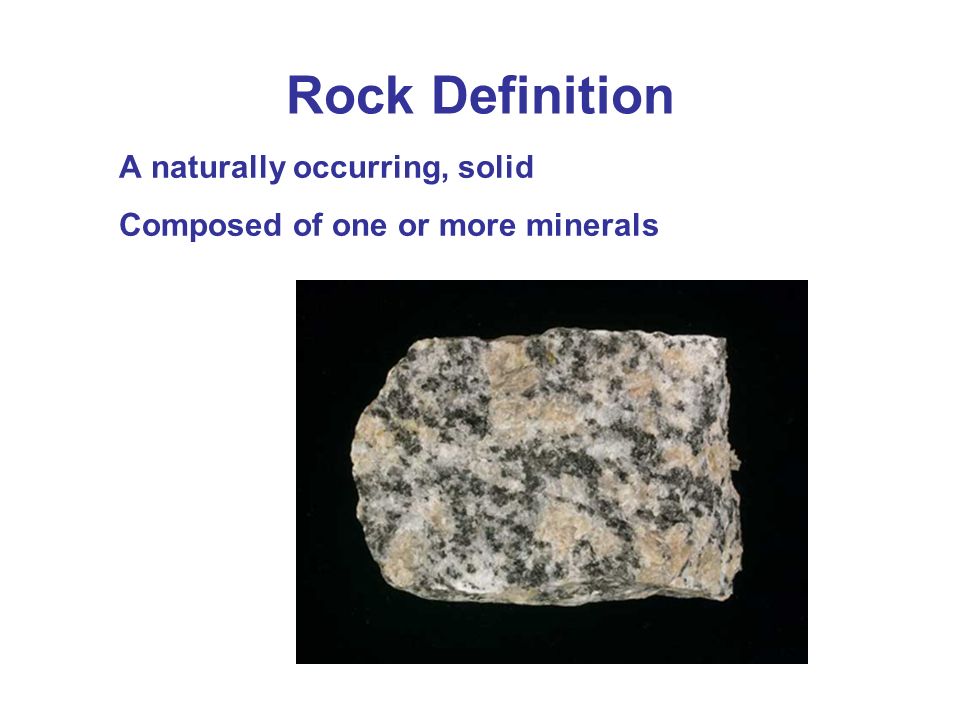
5. Climate- This is the average weather condition of a place over a long period of time.

6. The soil and vegetation.
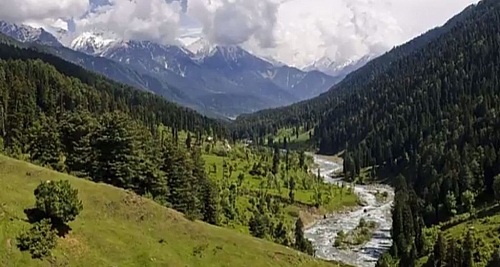
EVALUATION/ CLASSWORK:
1. List four features of physical environment.
2. Explain some of the features mentioned above.
HOME WORK/ ASSIGNMENT:
Differentiate between the physical and social environment. list four points.
further studies
http://www.slideshare.net/ganesh092929/ ... ent-jan-08
practice test
http://www.teach-nology.com/worksheets/ ... viro/quiz/
http://www.funtrivia.com/playquiz/quiz1 ... 41e80.html
http://www.funtrivia.com/newflash/trivia.cfm?qid=168161
MAIN TOPIC: THE PHYSICAL ENVIRONMENT.
SPECIFIC TOPIC: NIGERIA PHYSICAL ENVIRONMENT.
REFERENCE BOOKS: Social Studies for Nigerian JSS Book 1, by Remi E. Aiyede Et al. Basic Social Studies for Nigeria Secondary Schools by Anikpo et al. Simplified Social Studies for JSS by Ogunwale A.
PERFORMANCE OBJECTIVES: At the end of the lesson, the students should be able to:
1 explain the following terms: lowlands, highlands valley plain e.t.c.
CONTENTS:
NIGERIA PHYSICAL ENVIRONMENT
Nigeria's physical environment comprises of the relief features that surrounds us. The relief or the surface features are made up of highlands, lowlands, valleys, rivers, lakes e.t.c,
These features can generally be divided into two broad classes and these are the highlands and the lowlands.
THE HIGHLANDS- These are the uplands in Nigeria and the height must be above 400m before we can say a place is an highland, The major highlands we have in Nigeria are- The North Central Highlands, The Western Uplands, The Eastern Highlands, The North-East Highlands, The Eastern Scarplands. These highlands are made up of many mountain ranges such as Idanre, Ekpemi, Udi, Mandara, Mambila, Shere, Adamawa e.t.c.
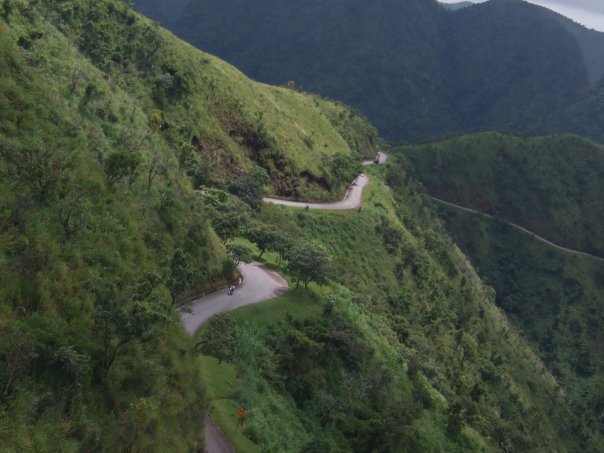
THE LOWLANDS- These are the areas where the elevation is less than 300m above the sea level. These are the lowlands of the coastlines of Nigeria, the Chad basin, The Niger/Benue trough, the Sokoto basin and the Niger Delta.
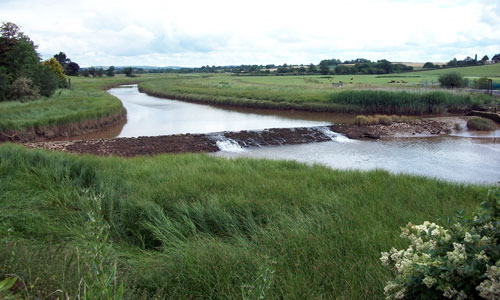
In Nigeria apart from the lowlands and the highlands there are some features that need to known such as- lakes e.g. Chad and Kainji., Confluence i.e. Niger/Benue confluence in Lokoja, and the Niger Delta.
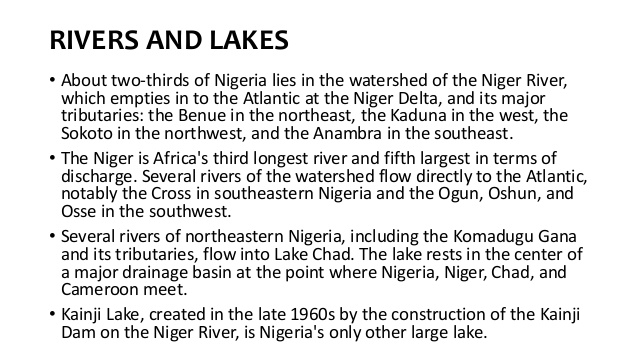
http://upload.wikimedia.org/wikipedia/c ... graphy.png
SPECIFIC TOPIC: FEATURES OF PHYSICAL ENVIRONMENT.
REFERENCE BOOK S: Social Studies for Nigerian JSS Book 1, by Remi E. Aiyede Et al. Basic Social Studies for Nigeria Secondary Schools by Anikpo et al. Simplified Social Studies for JSS by Ogunwale A.
PERFORMANCE OBJECTIVES: At the end of the lesson, the students should be able to:
1. list the features of physical environment.
2. explain some of the features of physical environment.
CONTENTS:
FEATURES OF PHYSICAL ENVIRONMENT
The main features of our physical environment are:
1. The earth's crust "lithosphere" - This is the continents, land and ocean floor.

2. The water bodies "hydrosphere" - This is water bodies of ocean, seas and rivers e.t.c.

3. The atmosphere- This is the blanket of air made up of different types of gases.

4. Rocks- There are three types of rocks i.e. igneous, sedimentary and metamorphic rocks.

5. Climate- This is the average weather condition of a place over a long period of time.

6. The soil and vegetation.

EVALUATION/ CLASSWORK:
1. List four features of physical environment.
2. Explain some of the features mentioned above.
HOME WORK/ ASSIGNMENT:
Differentiate between the physical and social environment. list four points.
further studies
http://www.slideshare.net/ganesh092929/ ... ent-jan-08
practice test
http://www.teach-nology.com/worksheets/ ... viro/quiz/
http://www.funtrivia.com/playquiz/quiz1 ... 41e80.html
http://www.funtrivia.com/newflash/trivia.cfm?qid=168161
MAIN TOPIC: THE PHYSICAL ENVIRONMENT.
SPECIFIC TOPIC: NIGERIA PHYSICAL ENVIRONMENT.
REFERENCE BOOKS: Social Studies for Nigerian JSS Book 1, by Remi E. Aiyede Et al. Basic Social Studies for Nigeria Secondary Schools by Anikpo et al. Simplified Social Studies for JSS by Ogunwale A.
PERFORMANCE OBJECTIVES: At the end of the lesson, the students should be able to:
1 explain the following terms: lowlands, highlands valley plain e.t.c.
CONTENTS:
NIGERIA PHYSICAL ENVIRONMENT
Nigeria's physical environment comprises of the relief features that surrounds us. The relief or the surface features are made up of highlands, lowlands, valleys, rivers, lakes e.t.c,
These features can generally be divided into two broad classes and these are the highlands and the lowlands.
THE HIGHLANDS- These are the uplands in Nigeria and the height must be above 400m before we can say a place is an highland, The major highlands we have in Nigeria are- The North Central Highlands, The Western Uplands, The Eastern Highlands, The North-East Highlands, The Eastern Scarplands. These highlands are made up of many mountain ranges such as Idanre, Ekpemi, Udi, Mandara, Mambila, Shere, Adamawa e.t.c.

THE LOWLANDS- These are the areas where the elevation is less than 300m above the sea level. These are the lowlands of the coastlines of Nigeria, the Chad basin, The Niger/Benue trough, the Sokoto basin and the Niger Delta.

In Nigeria apart from the lowlands and the highlands there are some features that need to known such as- lakes e.g. Chad and Kainji., Confluence i.e. Niger/Benue confluence in Lokoja, and the Niger Delta.

http://upload.wikimedia.org/wikipedia/c ... graphy.png
WEEK 9
LESSON 14
MAIN TOPIC: NIGERIA PHYSICAL ENVIRONMENT.
SPECIFIC TOPIC: NIGERIA DRAINAGE PATTERN. REFERENCE BOOKS: Social Studies for Nigerian JSS Book 1, by Remi E. Aiyede Et al. Basic Social Studies For Nigeria Secondary Schools by Anikpo et al. Simplified Social Studies for JSS by Ogunwale A.
PERFORMANCE OBJECTIVES: At the end of the lesson, the students should be able to:
1. explain briefly the drainage of Nigeria.
2. list seven important rivers in Nigeria.
CONTENTS:
NIGERIA DRAINAGE PATTERN
These are the rivers and lakes found in Nigeria. The rivers take their sources from different areas but mostly on highlands in the North, West and the East.Some of the rivers in Nigeria take their sources out of the country e.g. Niger, Benue, Katsina-Ala, Cross and Chori.
The major rivers in Nigeria are Niger, Benue, Kaduna, Katsina _Ala, Cross, Ogun,Osun, Osse, Moshi, Awun, Gongola, Yedseram, Komadugu-Yobe, Hadeija, Anambra, Imo, Ngala e.t.c.

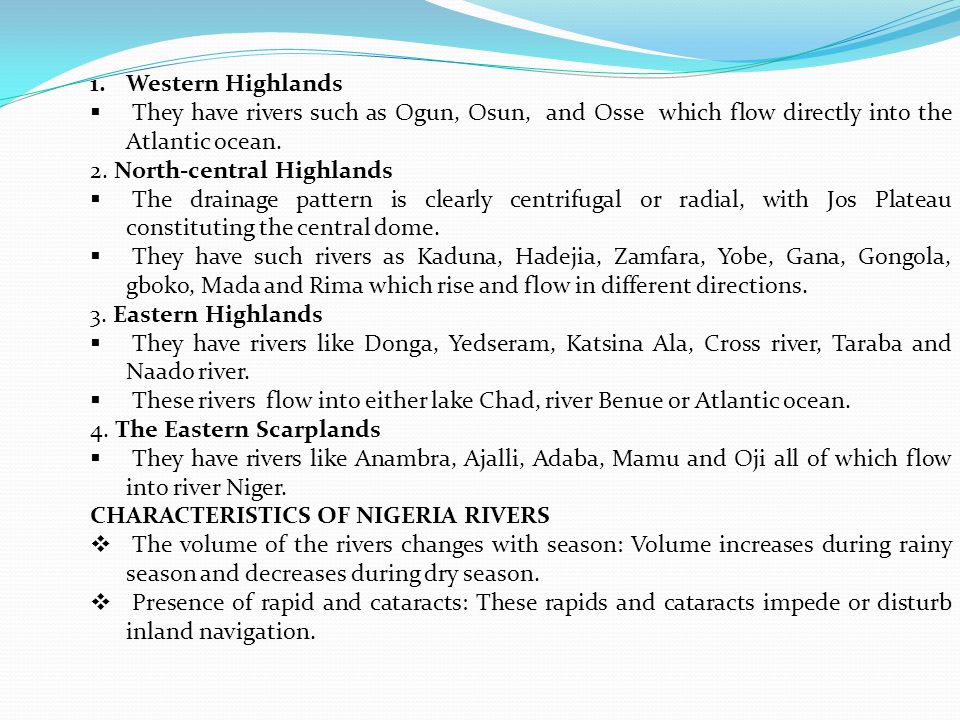
IMPORTANCE OF NIGERIA RIVERS
1. They are used for irrigation farming.
2. They provide food for man and also source of protein e.g. fish.
3. Nigeria rivers are used for water transport.
4. They are used as industrial raw materials e.g. in brewery and textile industries.
5. They provide employment opportunities to Nigerians
6.They are used to generate hydro electric power.
7. They are also used to promote tourism.
8. Nigerian rivers are used for domestic purposes e.g. cooking and bathing.
MAP OF NIGERIA SHOWING MAJOR RIVERS
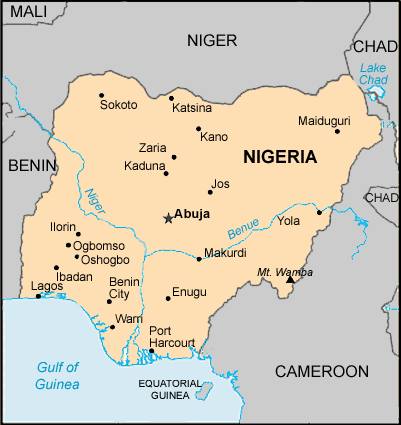

EVALUATION/ CLASSWORK:
List the importance of lowlands and highlands in Nigeria.
MAIN TOPIC: PHYSICAL ENVIRONMENT.
REFERENCE BOOKS: Social Studies for Nigerian JSS Book 1, by Remi E. Aiyede Et al. Basic Social Studies for Nigeria Secondary Schools by Anikpo et al. Simplified Social Studies for JSS by Ogunwale A.
PERFORMANCE OBJECTIVES: At the end of the lesson, the students should be able to:
1. List ways by which the environment has influenced man.
2. Explain how man has influenced his environment.
CONTENTS:
HOW ENVIRONMENT INFLUENCES MAN
There are some ways by which the environment has influenced man, and these are:
1. The physical environment determines man's occupation.
2. It determines the types of crops that are cultivated in an area.
3. It also determines some people's traditional beliefs e.g. people living in riverine areas worship water goddess and gods.
4. It influences the types of houses built e.g. in riverine areas stilt houses are built, in grassland, houses are roofed with grasses.
5. It also determines the types of cloth we wear.
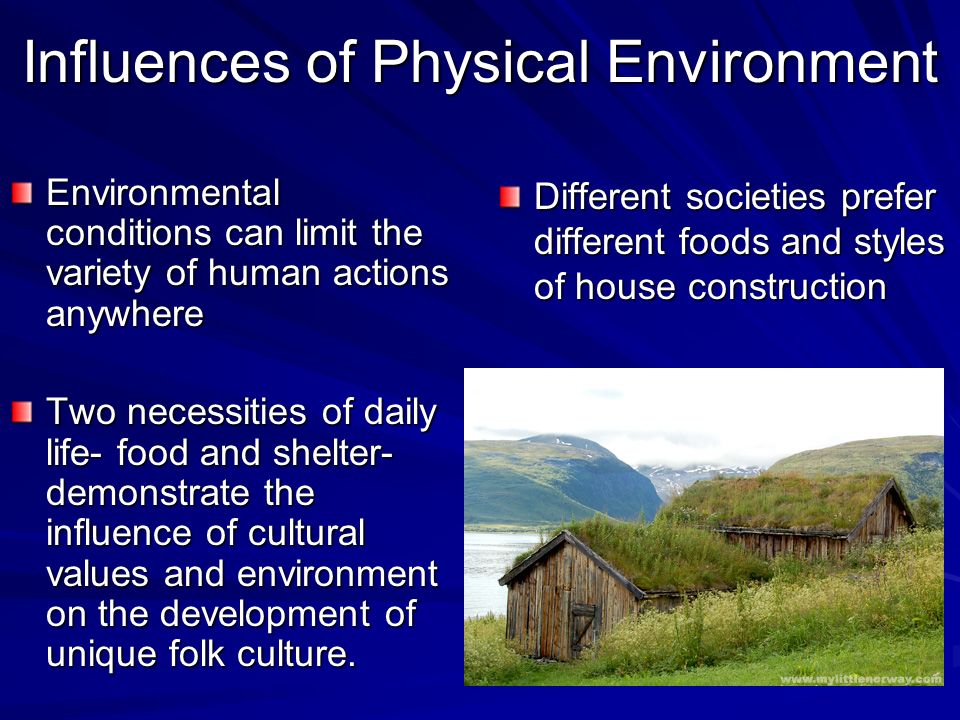
EVALUATION/ CLASSWORK:
List ways by which environment has influence man's living.
Explain three activities of man that has influenced the environment.
LESSON 16
MAIN TOPIC: PHYSICAL ENVIRONMENT
SPECIFIC TOPIC: MAN'S INFLUENCE ON THE ENVIRONMENT
REFERENCE BOOKS: Social Studies for Nigerian JSS Book 1, by Remi E. Aiyede Et al. Basic Social Studies For Nigeria Secondary Schools by Anikpo et al. Simplified Social Studies for JSS by Ogunwale A.
PERFORMANCE OBJECTIVES: At the end of the lesson, the students should be able to:
List how man has influence his environment.
CONTENTS:
MAN'S INFLUENCE ON THE ENVIRONMENT
Man is not an island and so he needs to interact with his environment. This has come in different forms as stated below.
1. Man has adopted irrigation farming where there is no rainfall.
2. Flood control has been introduced in areas where there is excessive rainfall.
3. Harsh desert or hot environment has been made habitable by technology advancement.
4. Science and technology has made man's work easier than ever before.
5. Environment can be made positive with their discussion and opinion.
6. In areas of cold weather, thick cloths are worn and in hot environment, light cloths are worn due to advancement in technology.
7. Movement from one place to another are made easy by science and technology.
8. Preservation of materials is made easy by introduction of freezer in hot environment.
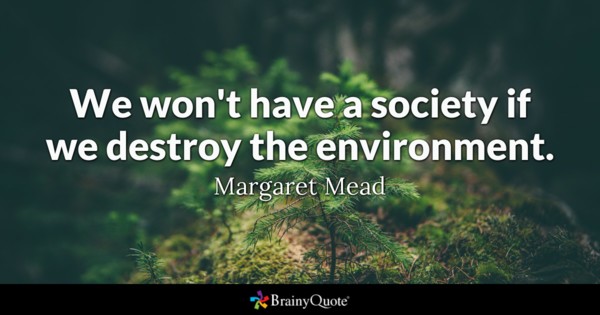
EVALUATION/ CLASSWORK:
List five ways by which man has influence his environment.
ASSIGNMENT:
List five environmental problems you know is affecting Nigeria.
LESSON 17
MAIN TOPIC: PHYSICAL ENVIRONMENT.
SPECIFIC TOPIC: ENVIRONMENTAL PROBLEMS.
REFERENCE BOOK S: Social Studies for Nigerian JSS Book 1, by Remi E. Aiyede Et al. Basic Social Studies for Nigeria Secondary Schools by Anikpo et al. Simplified Social Studies for JSS by Ogunwale A.
PERFORMANCE OBJECTIVES: At the end of the lesson, the students should be able to:
1. Explain the meaning of environmental problems.
2. List some environmental problems we have in Nigeria.
3. State solutions to environmental problems.
CONTENTS:
ENVIRONMENTAL PROBLEMS
This In every human society are inevitable simply because they are both man-made and natural. It may be due to man's activities in the environment or due to the physical condition of the area. These are:
1. Pollution- land water and air.
2. Flooding.
3. Erosion.
4. Drought.
5. Desert encroachment.
6. Deforestation.
7. Earthquake.
8. Volcanic eruption.
9. Tornado.
10. Cyclone.
11. Hurricane.

SOLUTION TO THESE PROBLEMS
1. Public enlightenment campaign to the public.
2. Noise pollution should be reduced by the use of industrial noise control.
3. Industrial emission should be reduced.
4. Proper disposal of household refuse.
5. Afforestation should be encouraged.
6. There should be forest reserve to reduce desert encroachment.
7. Good farming method and proper drainage to curb erosion.
8. Dams should be constructed to regulate flood water.
9. Environmental sanitation should be encouraged.

EVALUATION
Explain how man has affected his environment and how his environment has in turn affected him.
further studies
https://drive.google.com/open?id=1UDsPK ... FpU5NSxiNq
https://drive.google.com/open?id=17I7XF ... 1n_KjkohEm
http://www.ibiblio.org/obl/docs/System- ... lation.htm
practice test
http://www.merriam-webster.com/namethatthing/index.htm
MAIN TOPIC: NIGERIA PHYSICAL ENVIRONMENT.
SPECIFIC TOPIC: NIGERIA DRAINAGE PATTERN. REFERENCE BOOKS: Social Studies for Nigerian JSS Book 1, by Remi E. Aiyede Et al. Basic Social Studies For Nigeria Secondary Schools by Anikpo et al. Simplified Social Studies for JSS by Ogunwale A.
PERFORMANCE OBJECTIVES: At the end of the lesson, the students should be able to:
1. explain briefly the drainage of Nigeria.
2. list seven important rivers in Nigeria.
CONTENTS:
NIGERIA DRAINAGE PATTERN
These are the rivers and lakes found in Nigeria. The rivers take their sources from different areas but mostly on highlands in the North, West and the East.Some of the rivers in Nigeria take their sources out of the country e.g. Niger, Benue, Katsina-Ala, Cross and Chori.
The major rivers in Nigeria are Niger, Benue, Kaduna, Katsina _Ala, Cross, Ogun,Osun, Osse, Moshi, Awun, Gongola, Yedseram, Komadugu-Yobe, Hadeija, Anambra, Imo, Ngala e.t.c.


IMPORTANCE OF NIGERIA RIVERS
1. They are used for irrigation farming.
2. They provide food for man and also source of protein e.g. fish.
3. Nigeria rivers are used for water transport.
4. They are used as industrial raw materials e.g. in brewery and textile industries.
5. They provide employment opportunities to Nigerians
6.They are used to generate hydro electric power.
7. They are also used to promote tourism.
8. Nigerian rivers are used for domestic purposes e.g. cooking and bathing.
MAP OF NIGERIA SHOWING MAJOR RIVERS


EVALUATION/ CLASSWORK:
List the importance of lowlands and highlands in Nigeria.
MAIN TOPIC: PHYSICAL ENVIRONMENT.
REFERENCE BOOKS: Social Studies for Nigerian JSS Book 1, by Remi E. Aiyede Et al. Basic Social Studies for Nigeria Secondary Schools by Anikpo et al. Simplified Social Studies for JSS by Ogunwale A.
PERFORMANCE OBJECTIVES: At the end of the lesson, the students should be able to:
1. List ways by which the environment has influenced man.
2. Explain how man has influenced his environment.
CONTENTS:
HOW ENVIRONMENT INFLUENCES MAN
There are some ways by which the environment has influenced man, and these are:
1. The physical environment determines man's occupation.
2. It determines the types of crops that are cultivated in an area.
3. It also determines some people's traditional beliefs e.g. people living in riverine areas worship water goddess and gods.
4. It influences the types of houses built e.g. in riverine areas stilt houses are built, in grassland, houses are roofed with grasses.
5. It also determines the types of cloth we wear.

EVALUATION/ CLASSWORK:
List ways by which environment has influence man's living.
Explain three activities of man that has influenced the environment.
LESSON 16
MAIN TOPIC: PHYSICAL ENVIRONMENT
SPECIFIC TOPIC: MAN'S INFLUENCE ON THE ENVIRONMENT
REFERENCE BOOKS: Social Studies for Nigerian JSS Book 1, by Remi E. Aiyede Et al. Basic Social Studies For Nigeria Secondary Schools by Anikpo et al. Simplified Social Studies for JSS by Ogunwale A.
PERFORMANCE OBJECTIVES: At the end of the lesson, the students should be able to:
List how man has influence his environment.
CONTENTS:
MAN'S INFLUENCE ON THE ENVIRONMENT
Man is not an island and so he needs to interact with his environment. This has come in different forms as stated below.
1. Man has adopted irrigation farming where there is no rainfall.
2. Flood control has been introduced in areas where there is excessive rainfall.
3. Harsh desert or hot environment has been made habitable by technology advancement.
4. Science and technology has made man's work easier than ever before.
5. Environment can be made positive with their discussion and opinion.
6. In areas of cold weather, thick cloths are worn and in hot environment, light cloths are worn due to advancement in technology.
7. Movement from one place to another are made easy by science and technology.
8. Preservation of materials is made easy by introduction of freezer in hot environment.

EVALUATION/ CLASSWORK:
List five ways by which man has influence his environment.
ASSIGNMENT:
List five environmental problems you know is affecting Nigeria.
LESSON 17
MAIN TOPIC: PHYSICAL ENVIRONMENT.
SPECIFIC TOPIC: ENVIRONMENTAL PROBLEMS.
REFERENCE BOOK S: Social Studies for Nigerian JSS Book 1, by Remi E. Aiyede Et al. Basic Social Studies for Nigeria Secondary Schools by Anikpo et al. Simplified Social Studies for JSS by Ogunwale A.
PERFORMANCE OBJECTIVES: At the end of the lesson, the students should be able to:
1. Explain the meaning of environmental problems.
2. List some environmental problems we have in Nigeria.
3. State solutions to environmental problems.
CONTENTS:
ENVIRONMENTAL PROBLEMS
This In every human society are inevitable simply because they are both man-made and natural. It may be due to man's activities in the environment or due to the physical condition of the area. These are:
1. Pollution- land water and air.
2. Flooding.
3. Erosion.
4. Drought.
5. Desert encroachment.
6. Deforestation.
7. Earthquake.
8. Volcanic eruption.
9. Tornado.
10. Cyclone.
11. Hurricane.

SOLUTION TO THESE PROBLEMS
1. Public enlightenment campaign to the public.
2. Noise pollution should be reduced by the use of industrial noise control.
3. Industrial emission should be reduced.
4. Proper disposal of household refuse.
5. Afforestation should be encouraged.
6. There should be forest reserve to reduce desert encroachment.
7. Good farming method and proper drainage to curb erosion.
8. Dams should be constructed to regulate flood water.
9. Environmental sanitation should be encouraged.

EVALUATION
Explain how man has affected his environment and how his environment has in turn affected him.
further studies
https://drive.google.com/open?id=1UDsPK ... FpU5NSxiNq
https://drive.google.com/open?id=17I7XF ... 1n_KjkohEm
http://www.ibiblio.org/obl/docs/System- ... lation.htm
practice test
http://www.merriam-webster.com/namethatthing/index.htm
